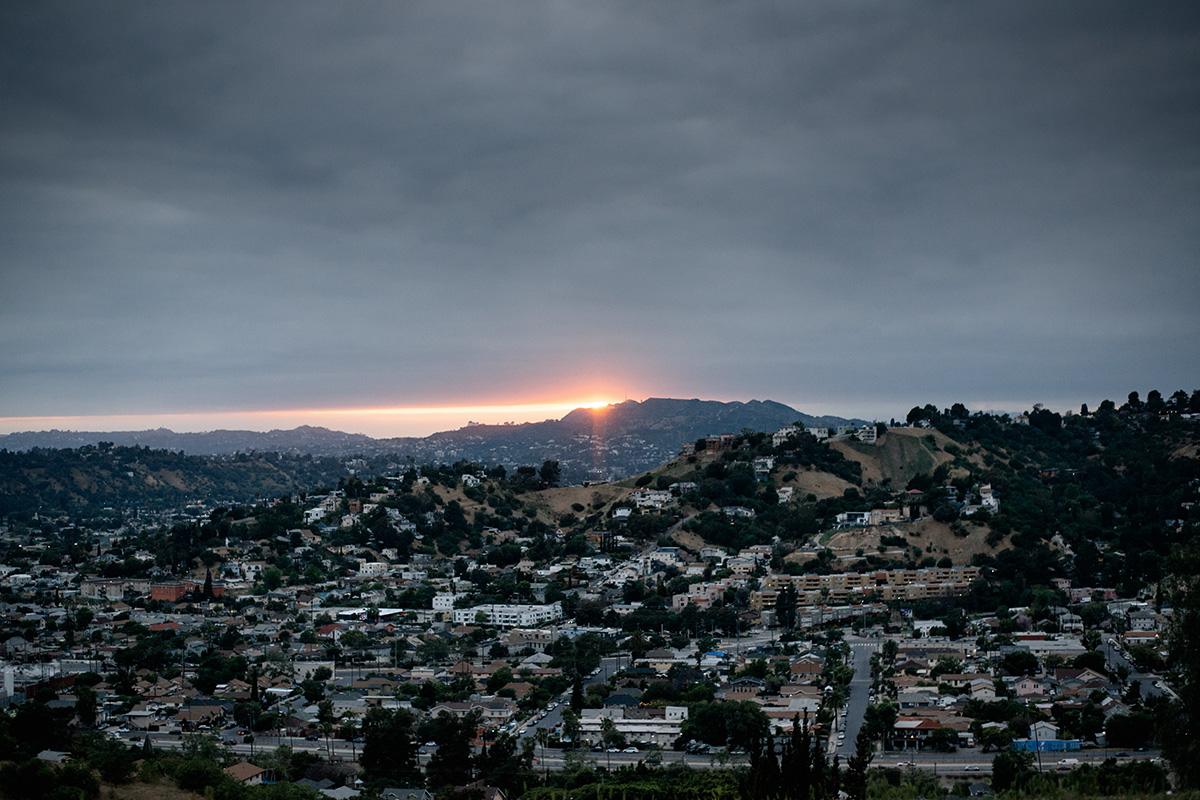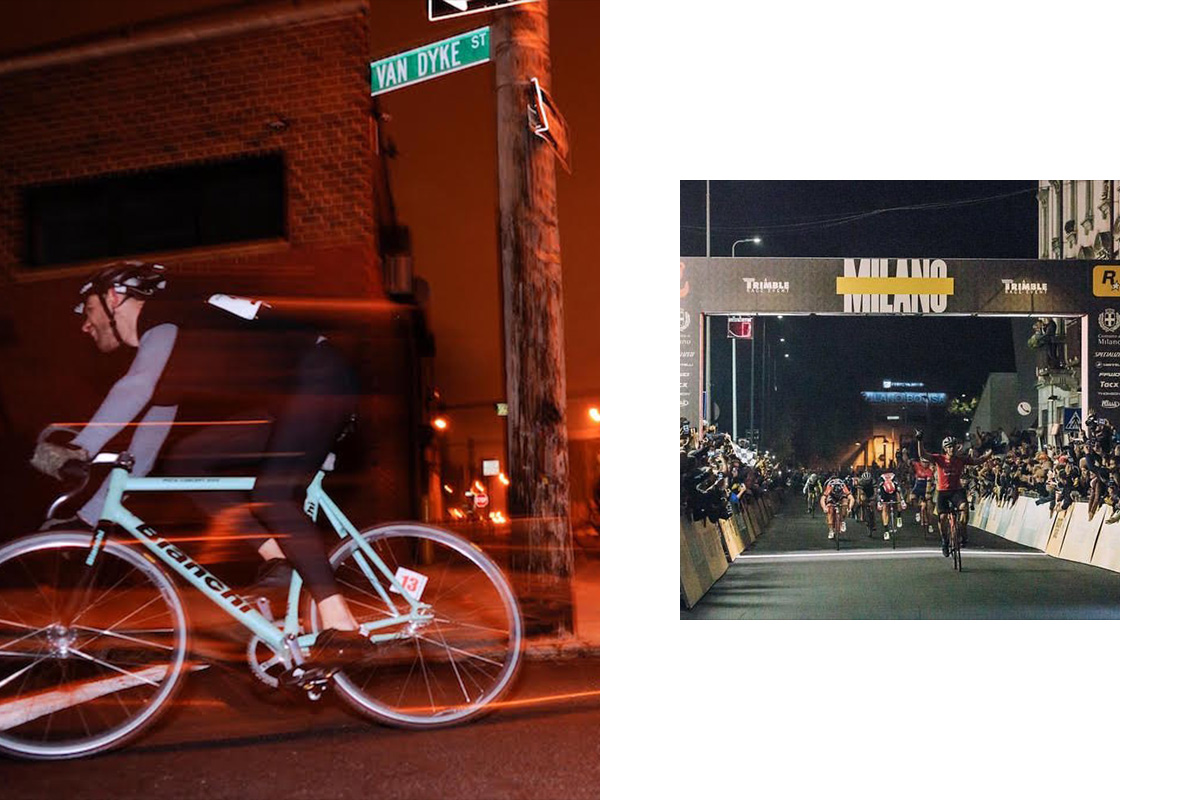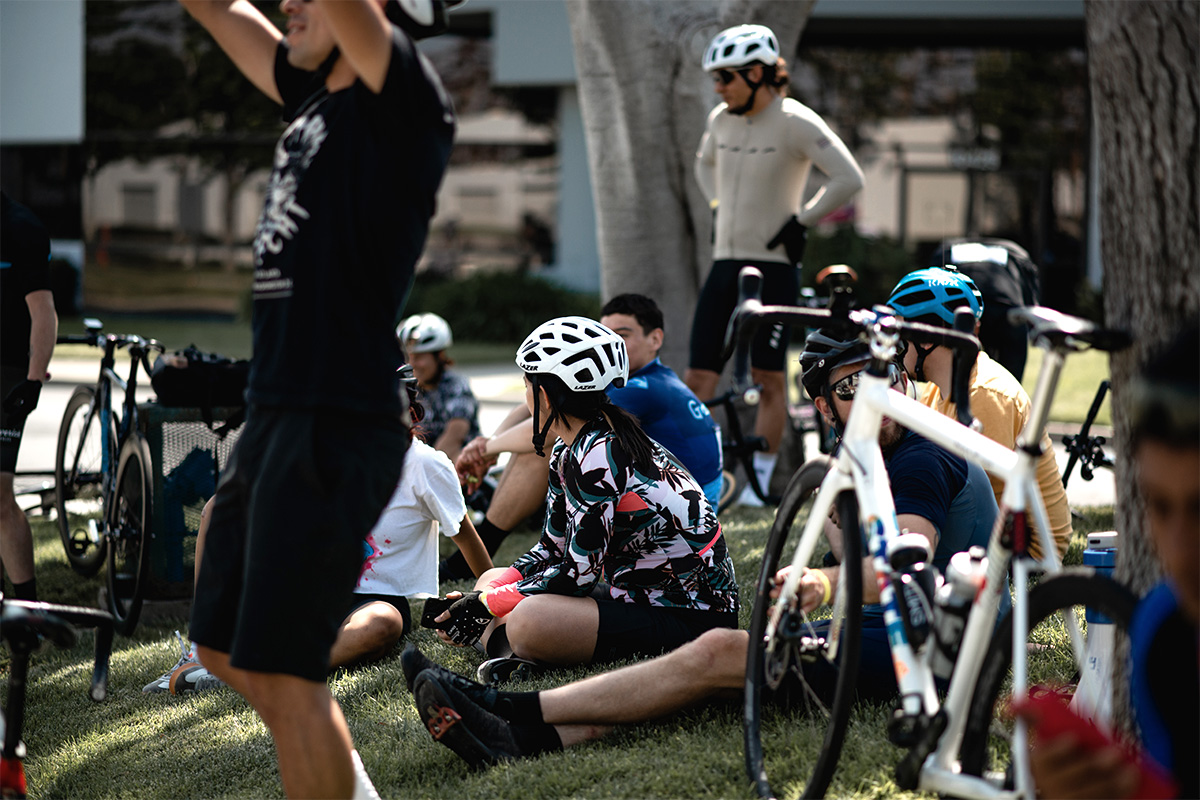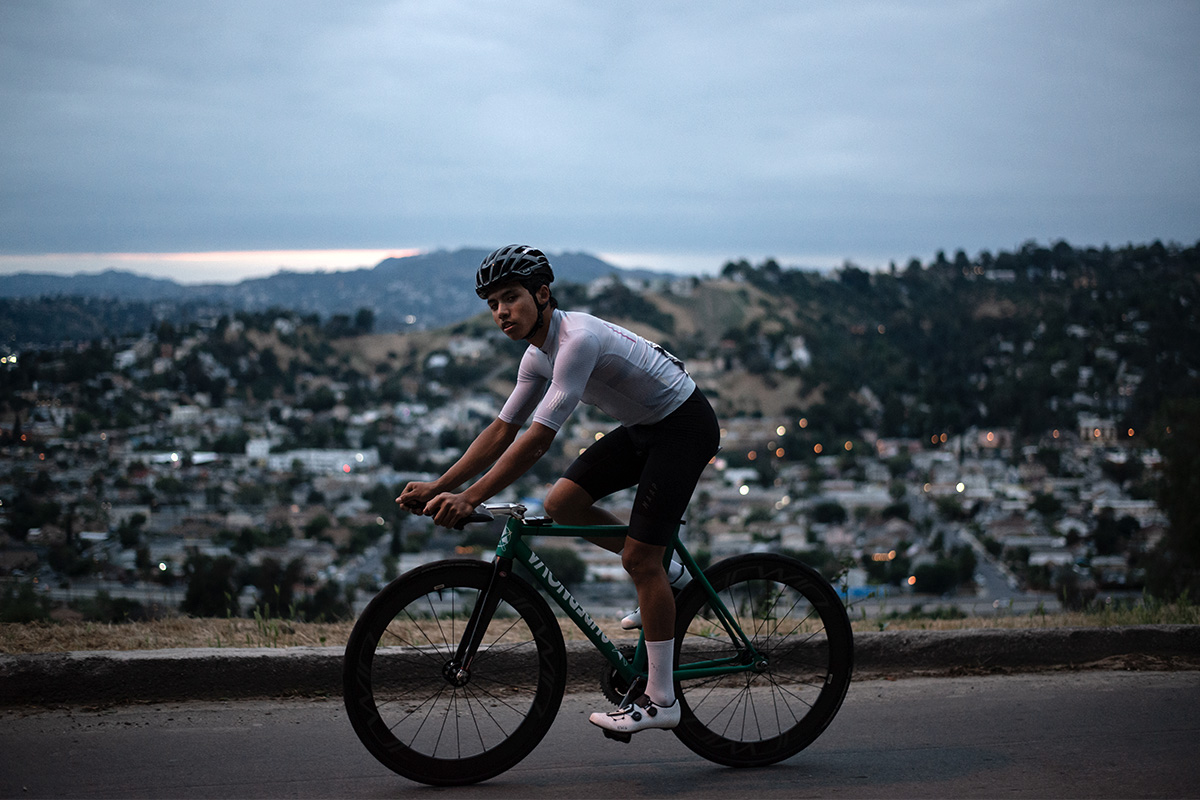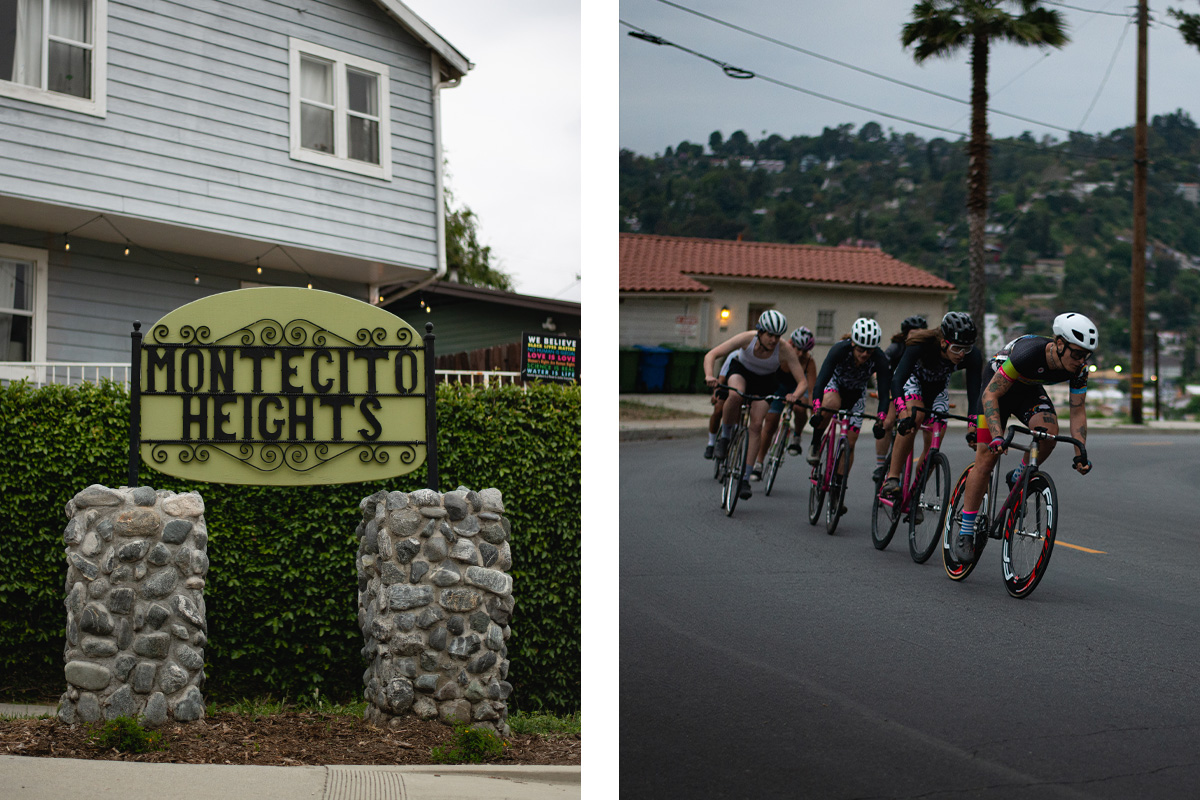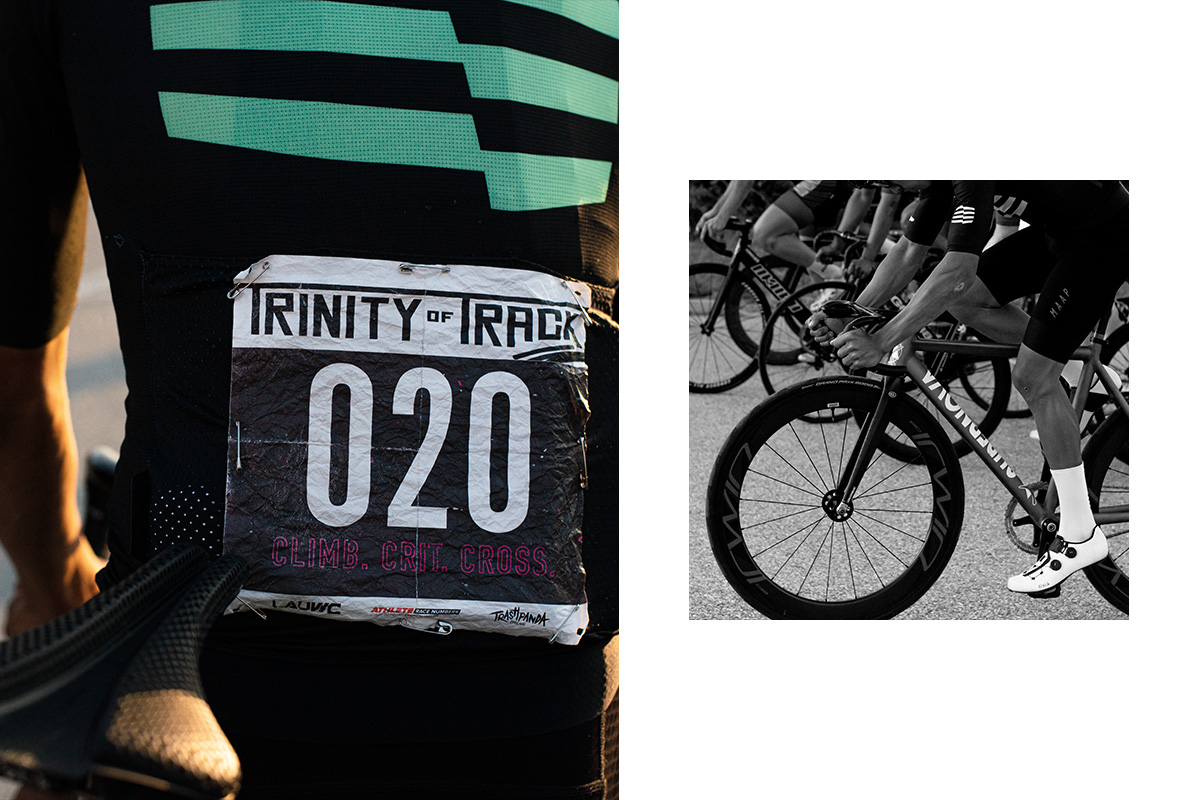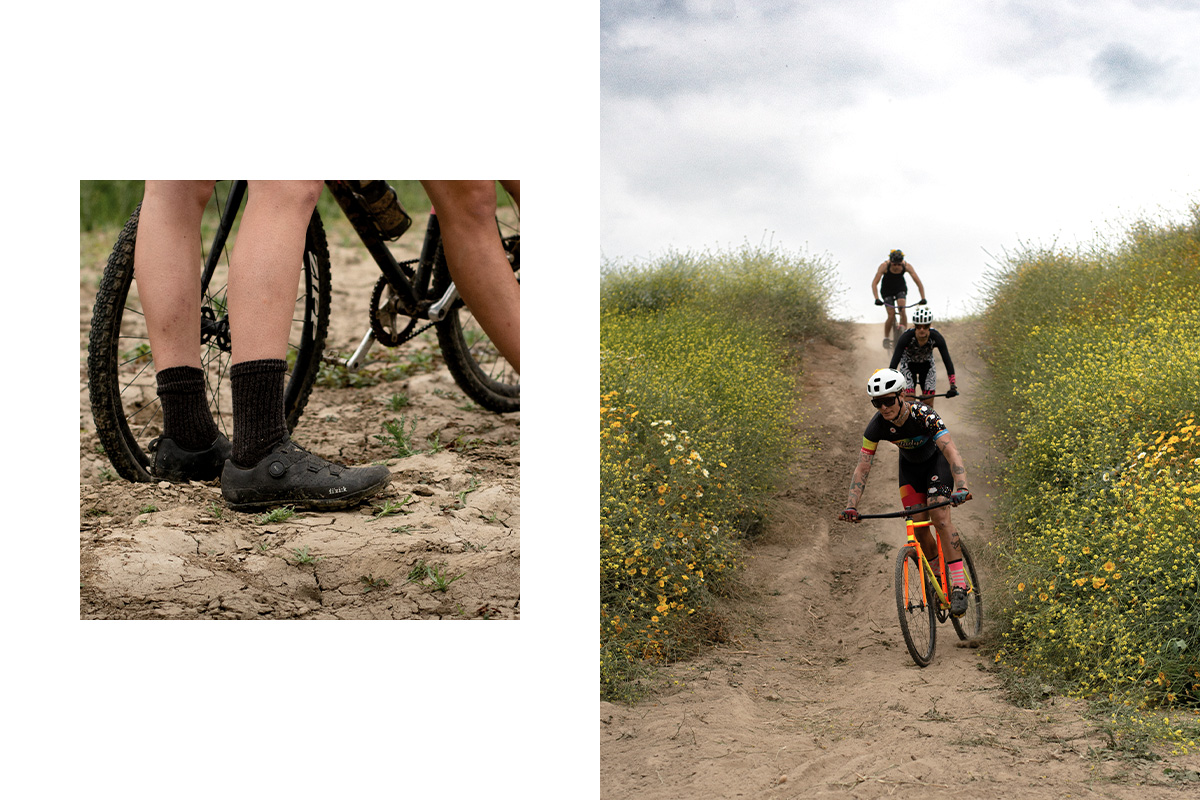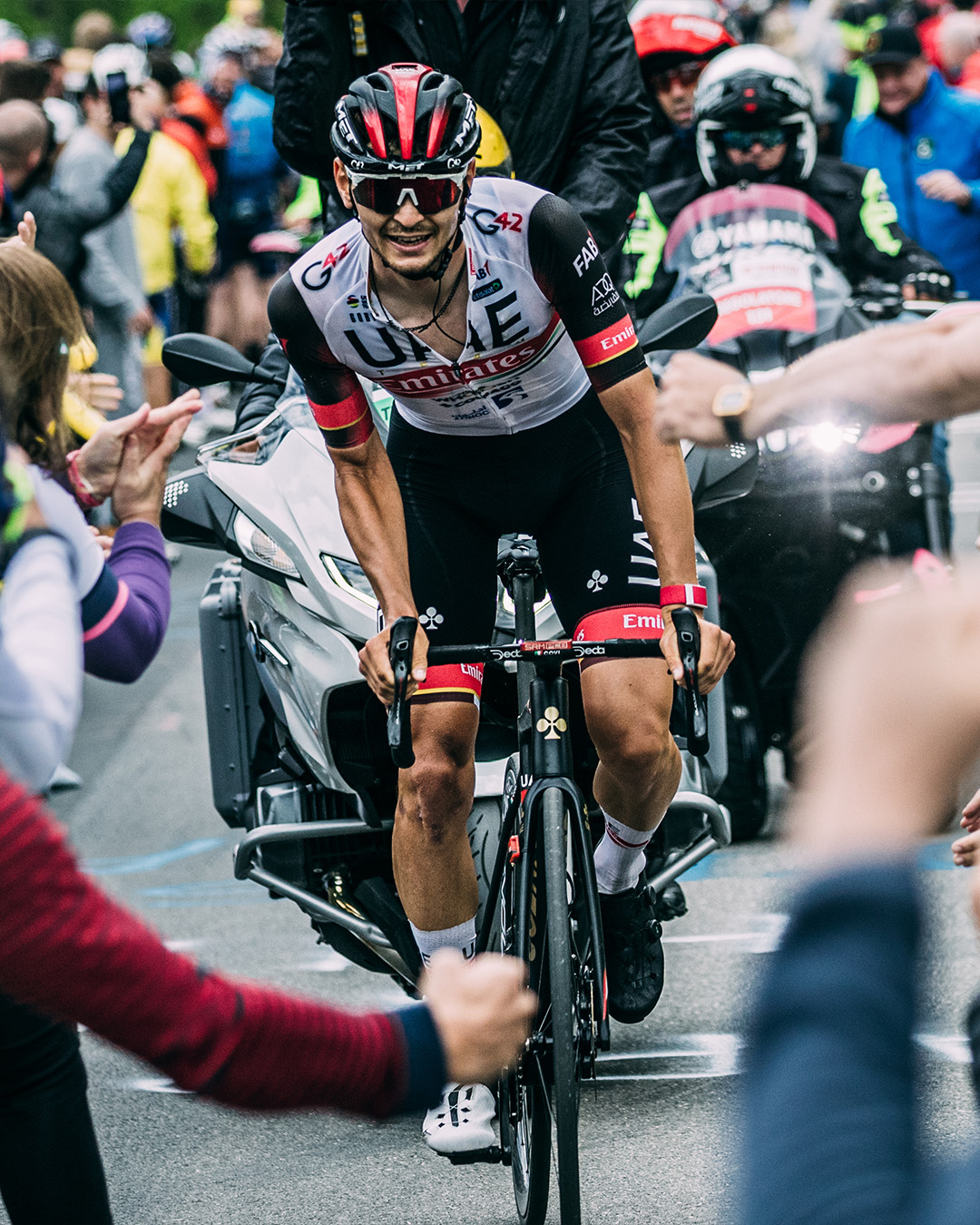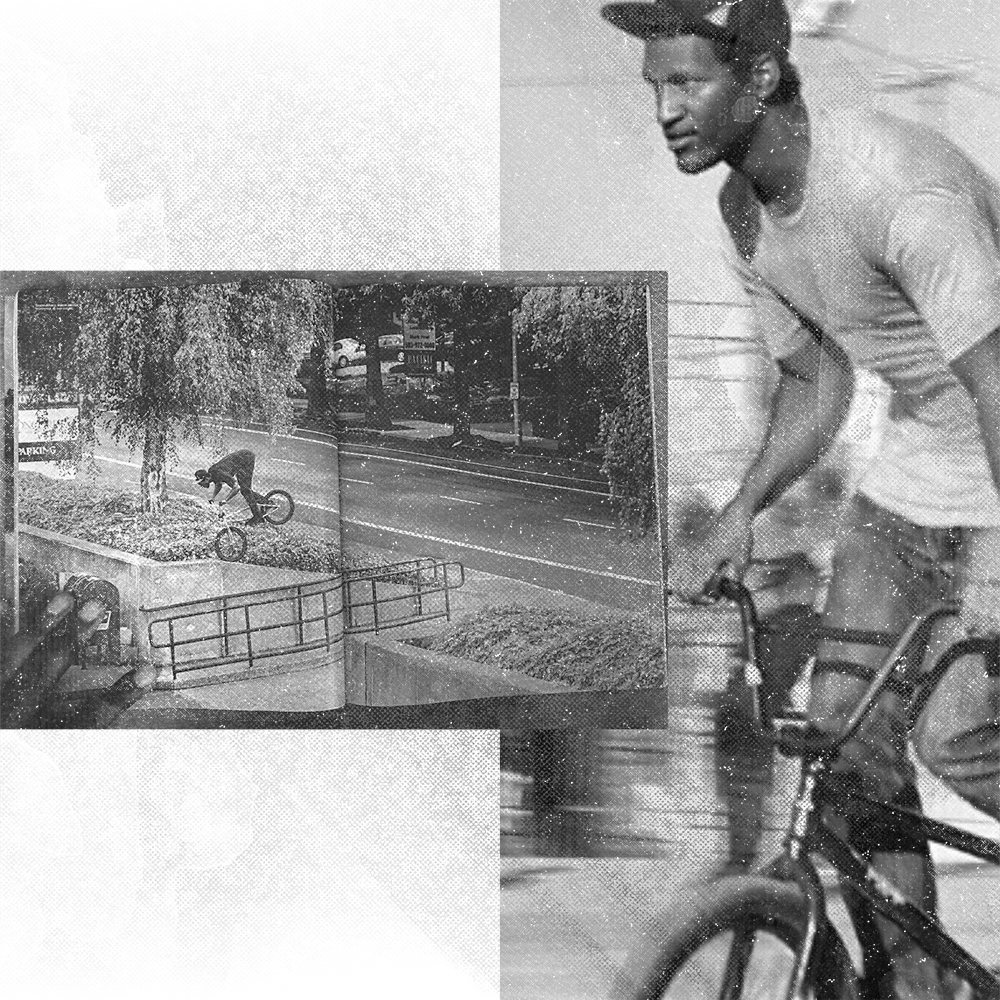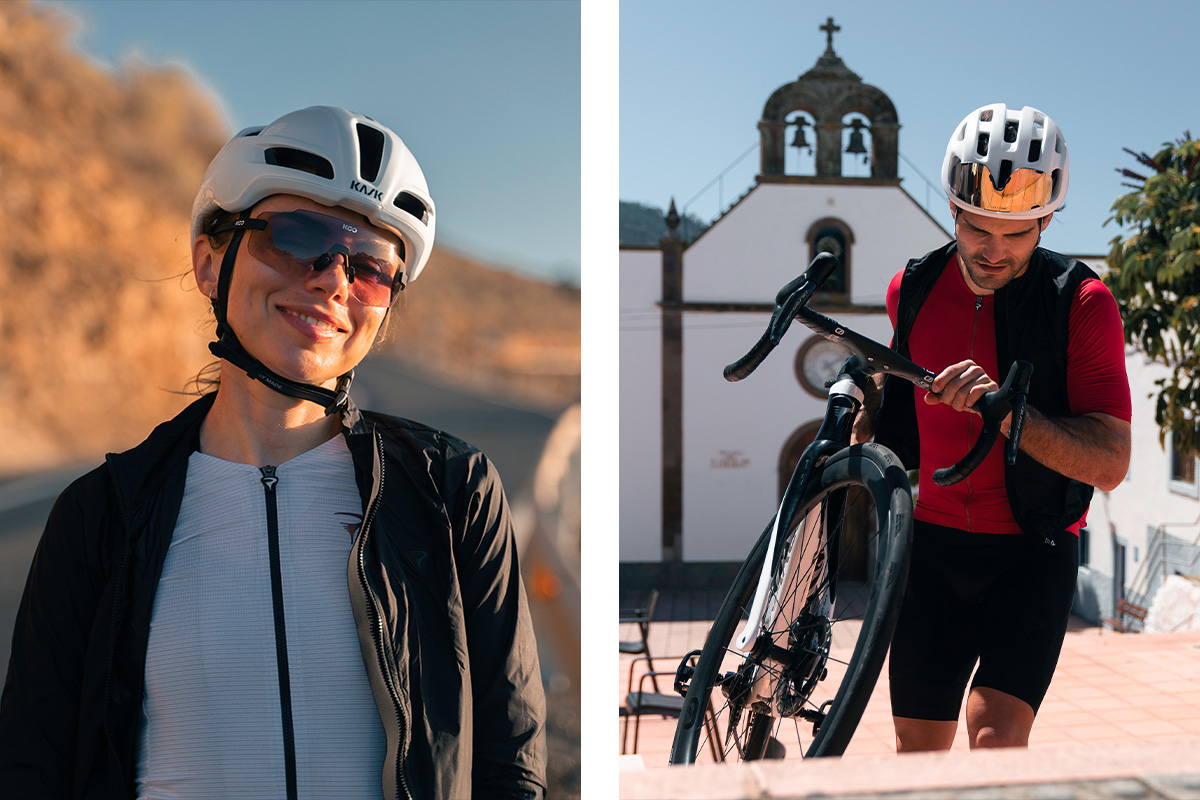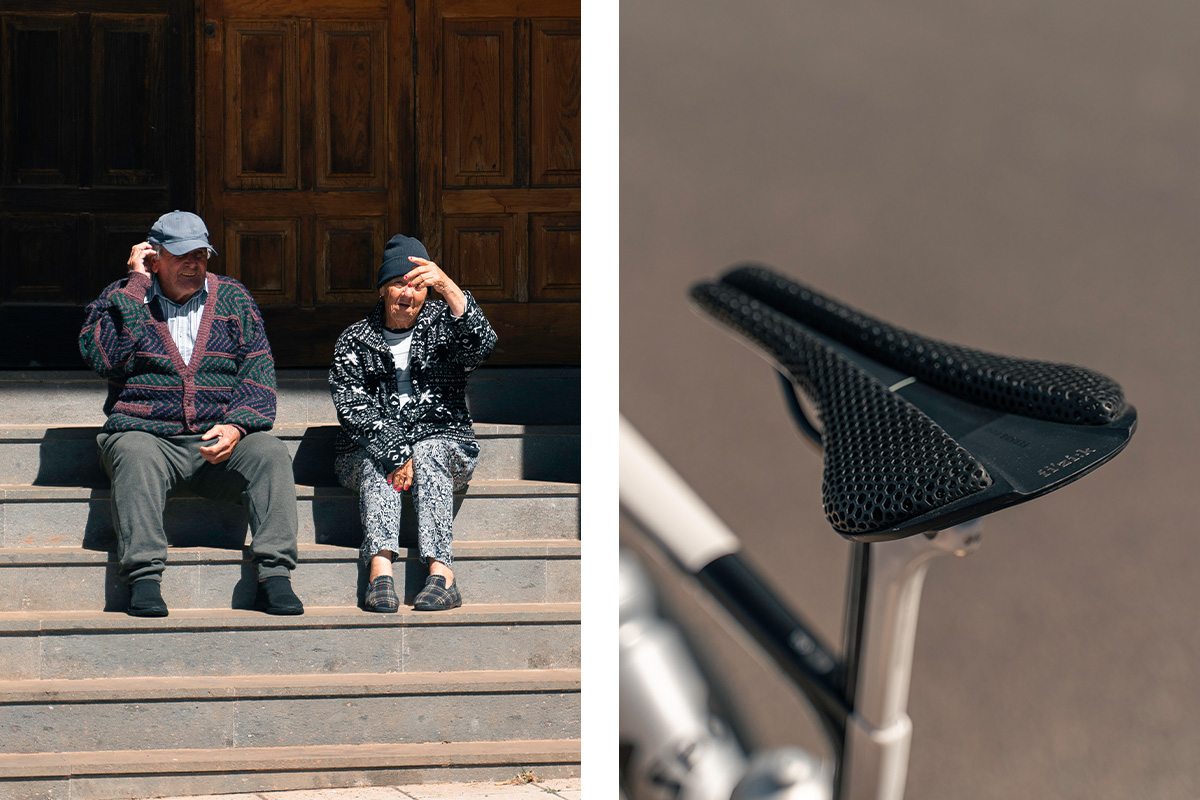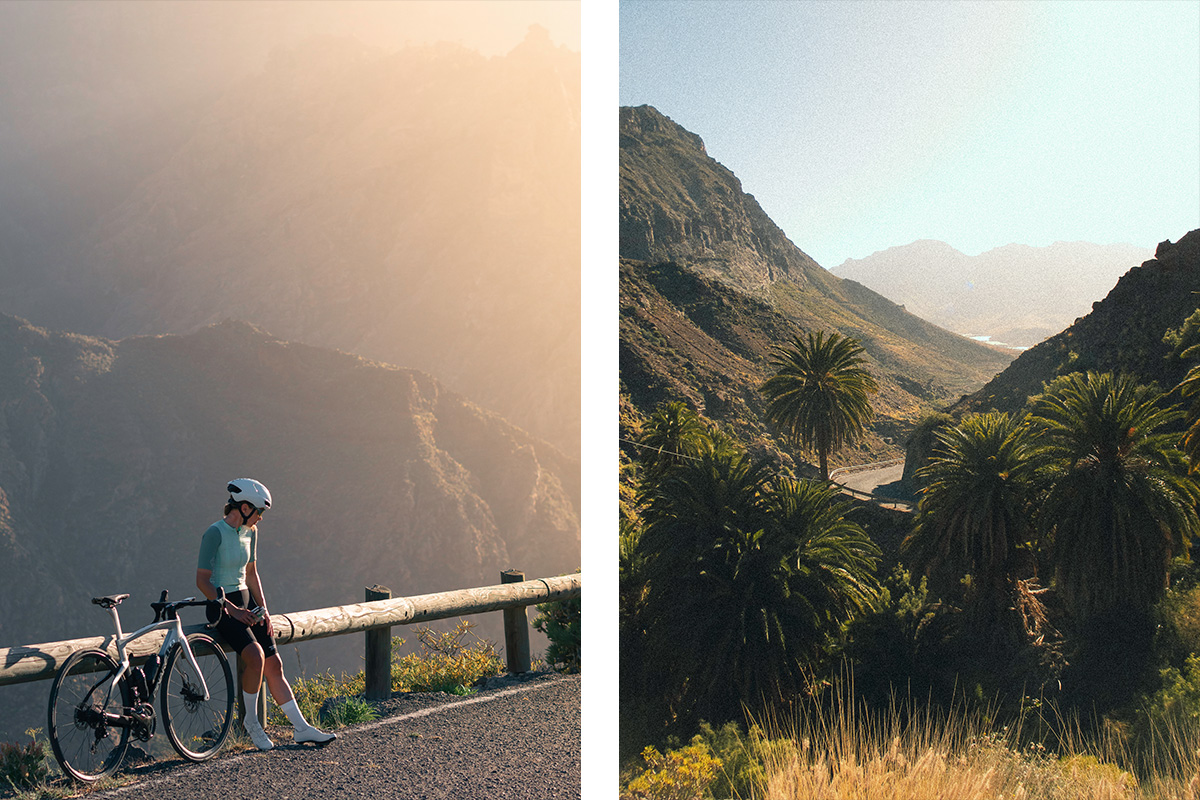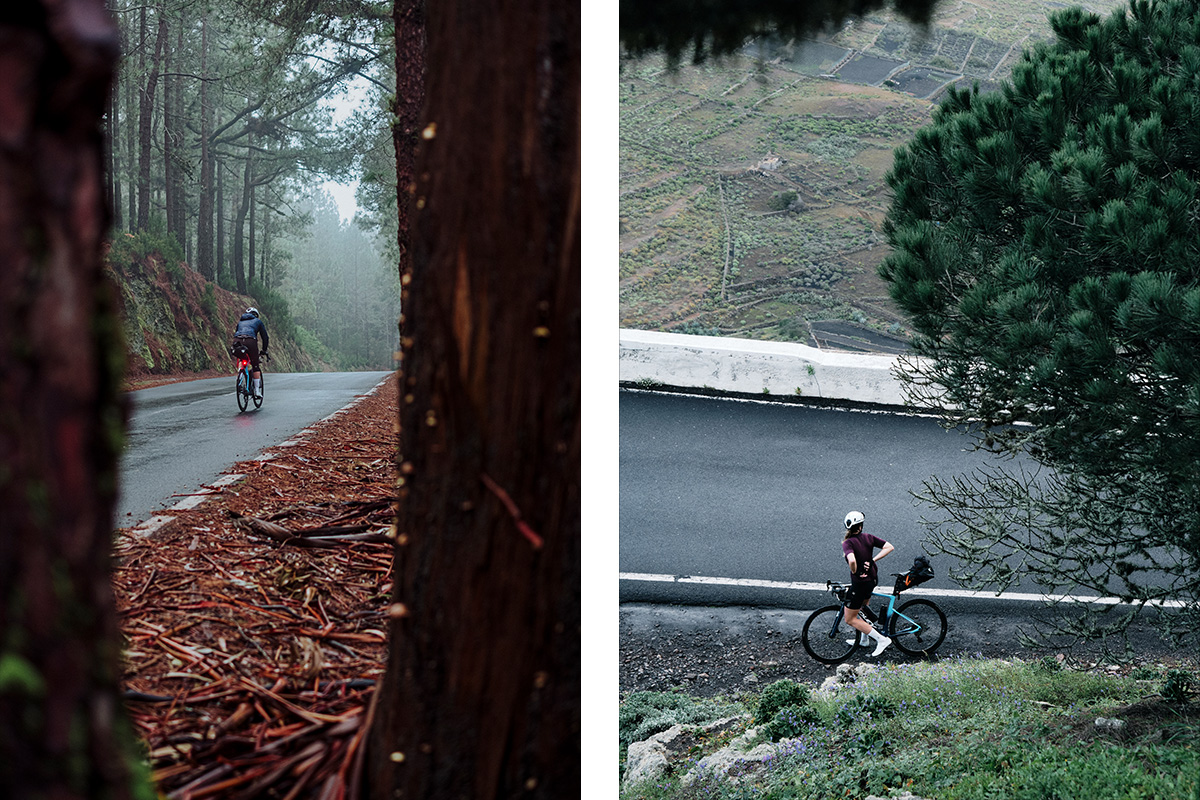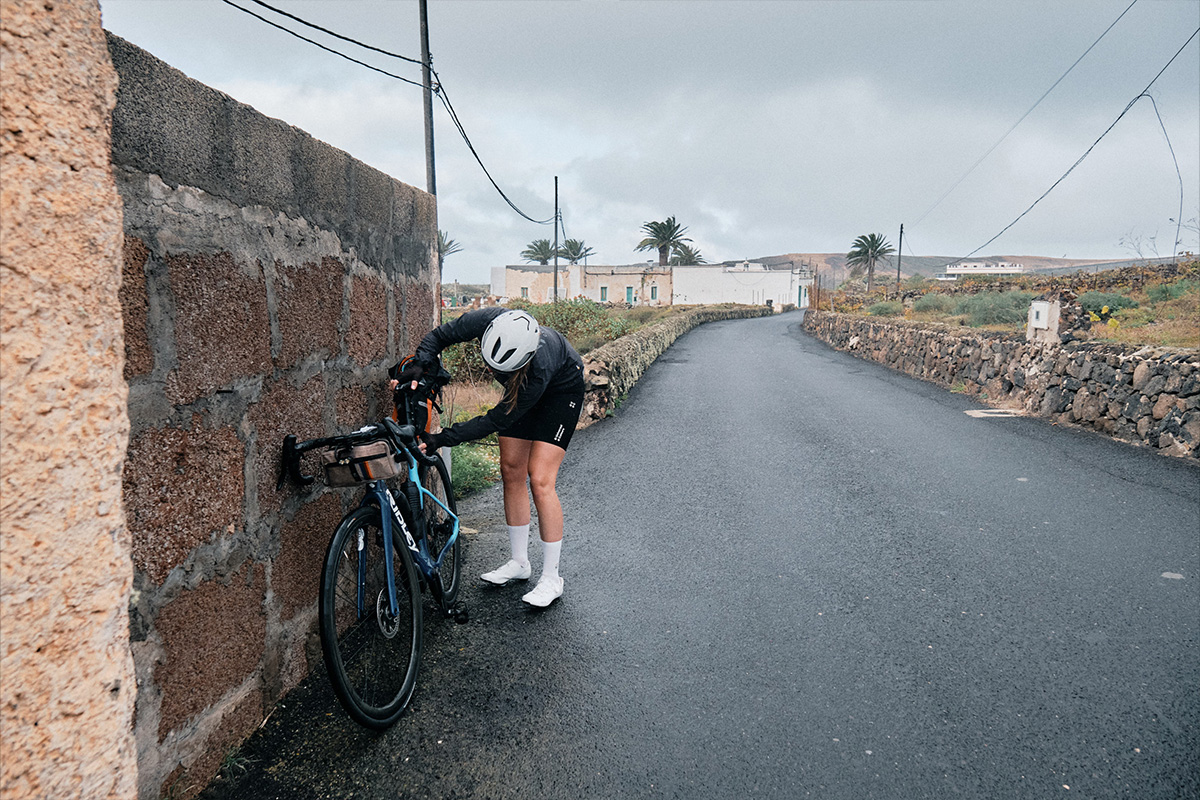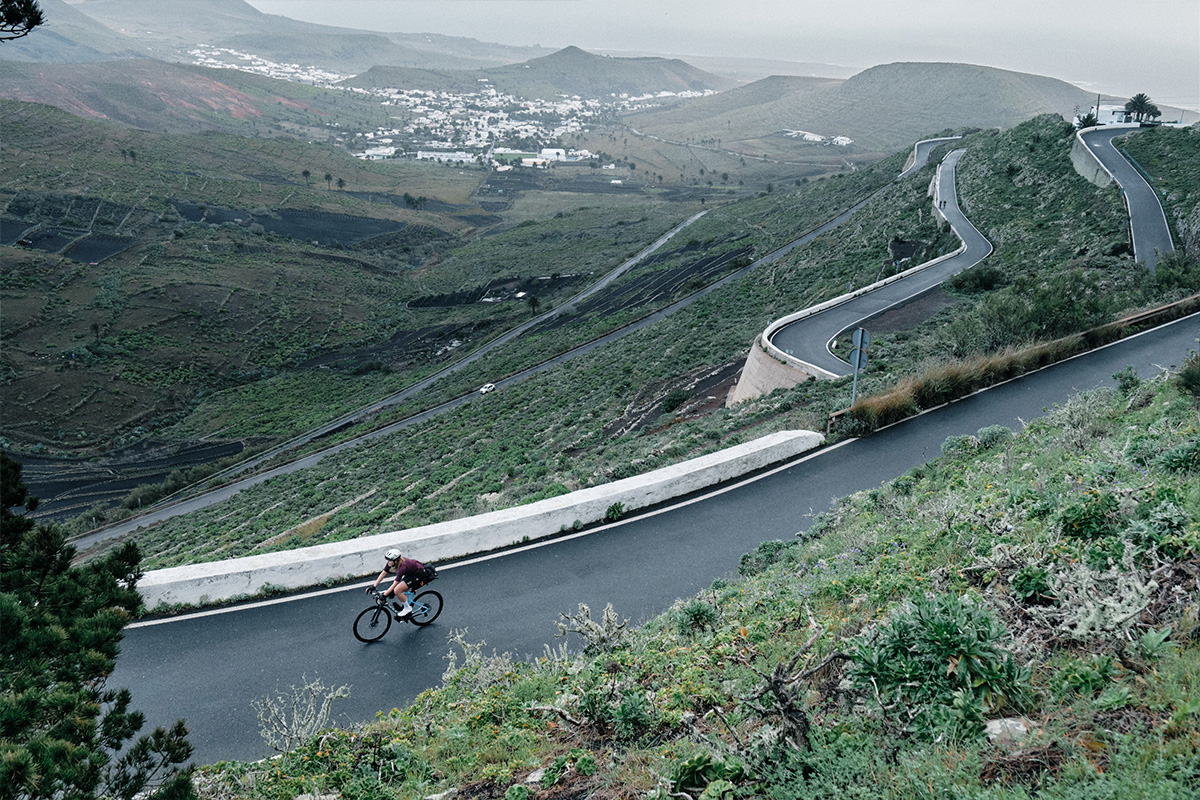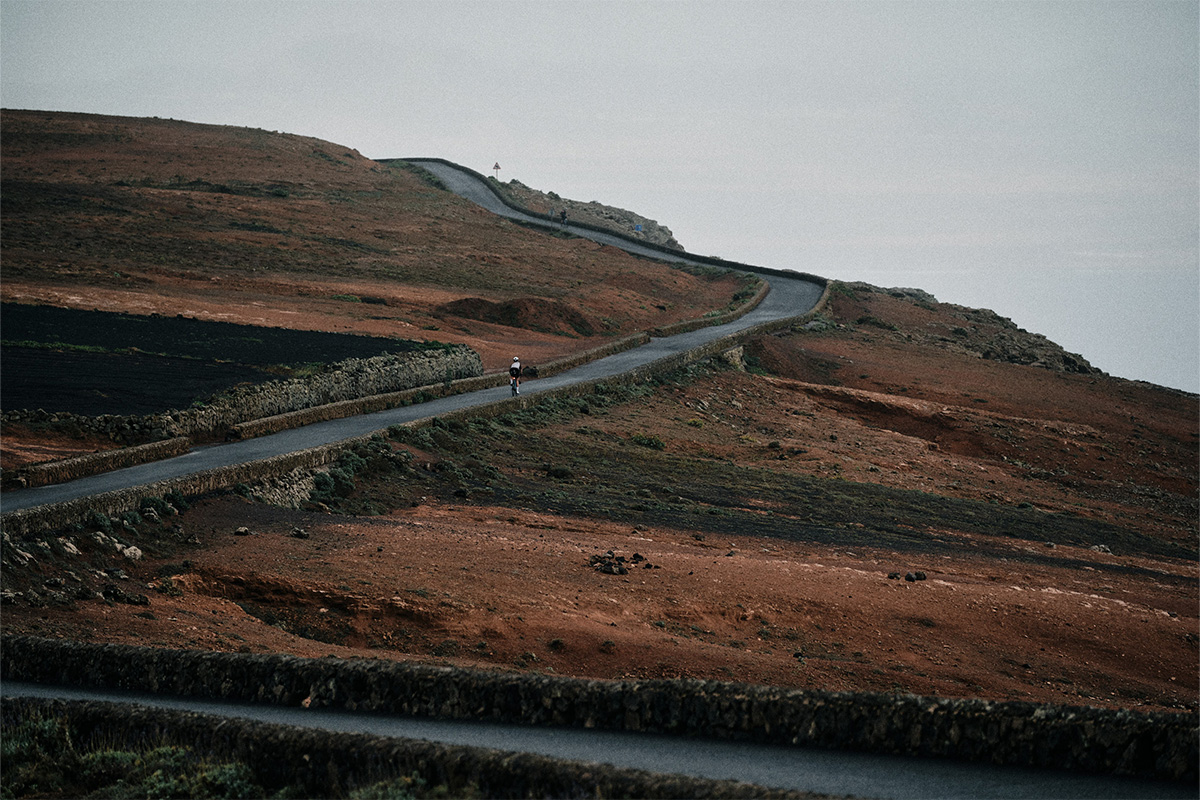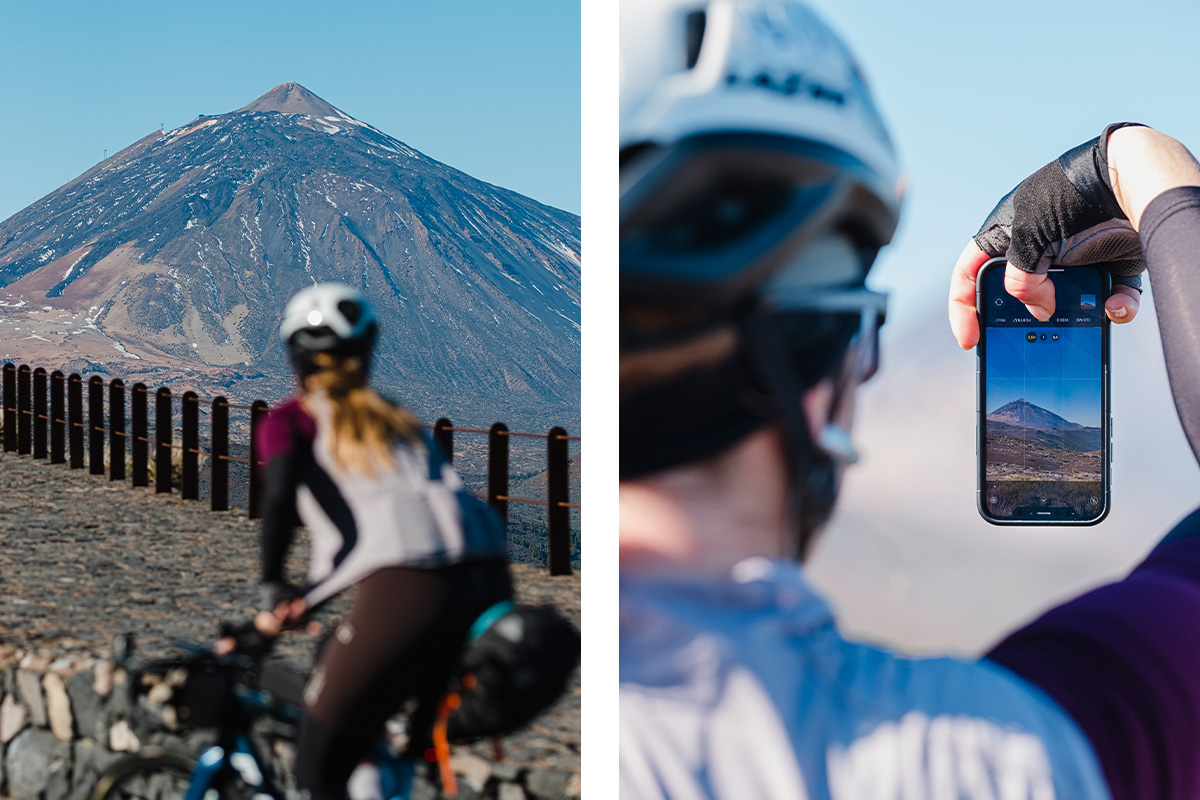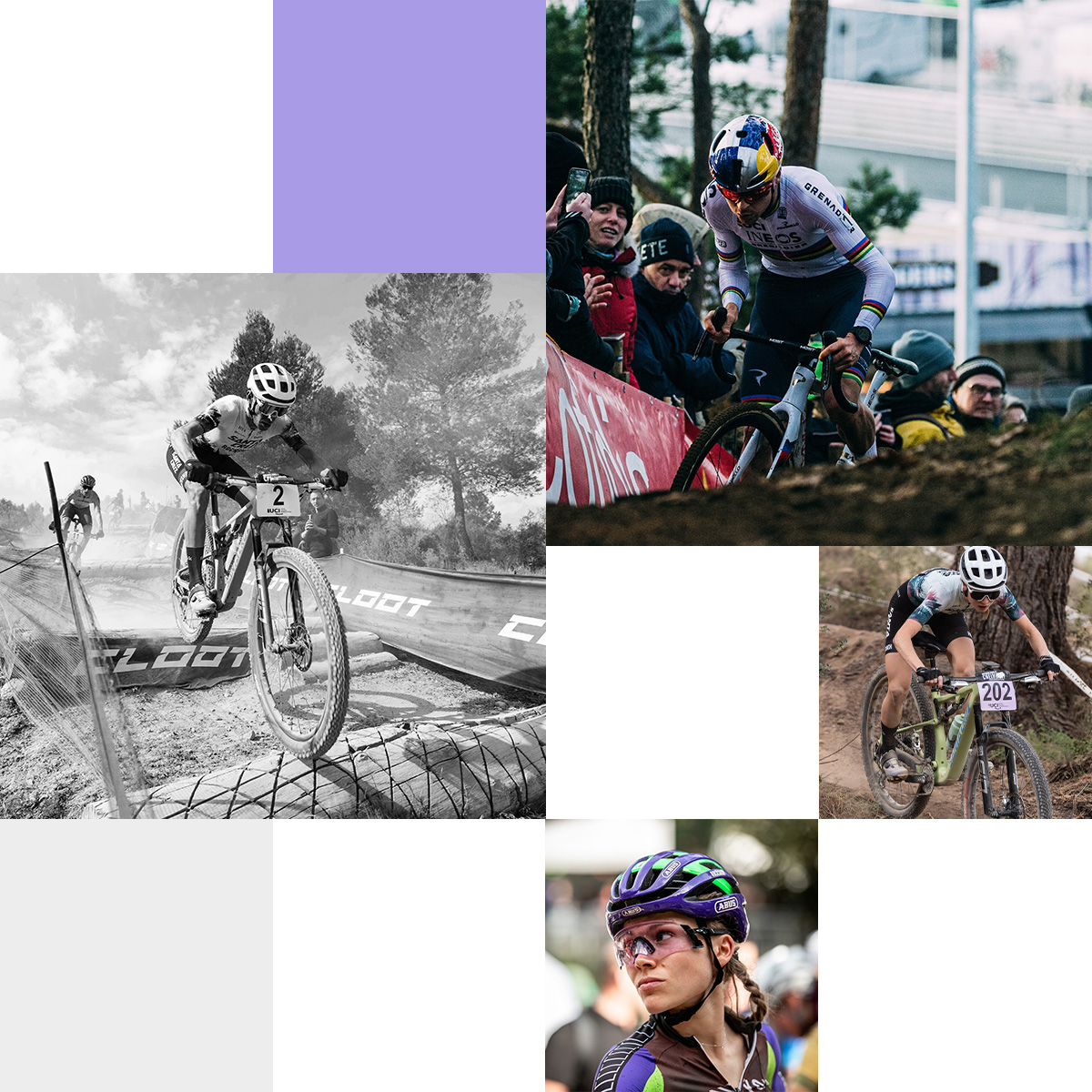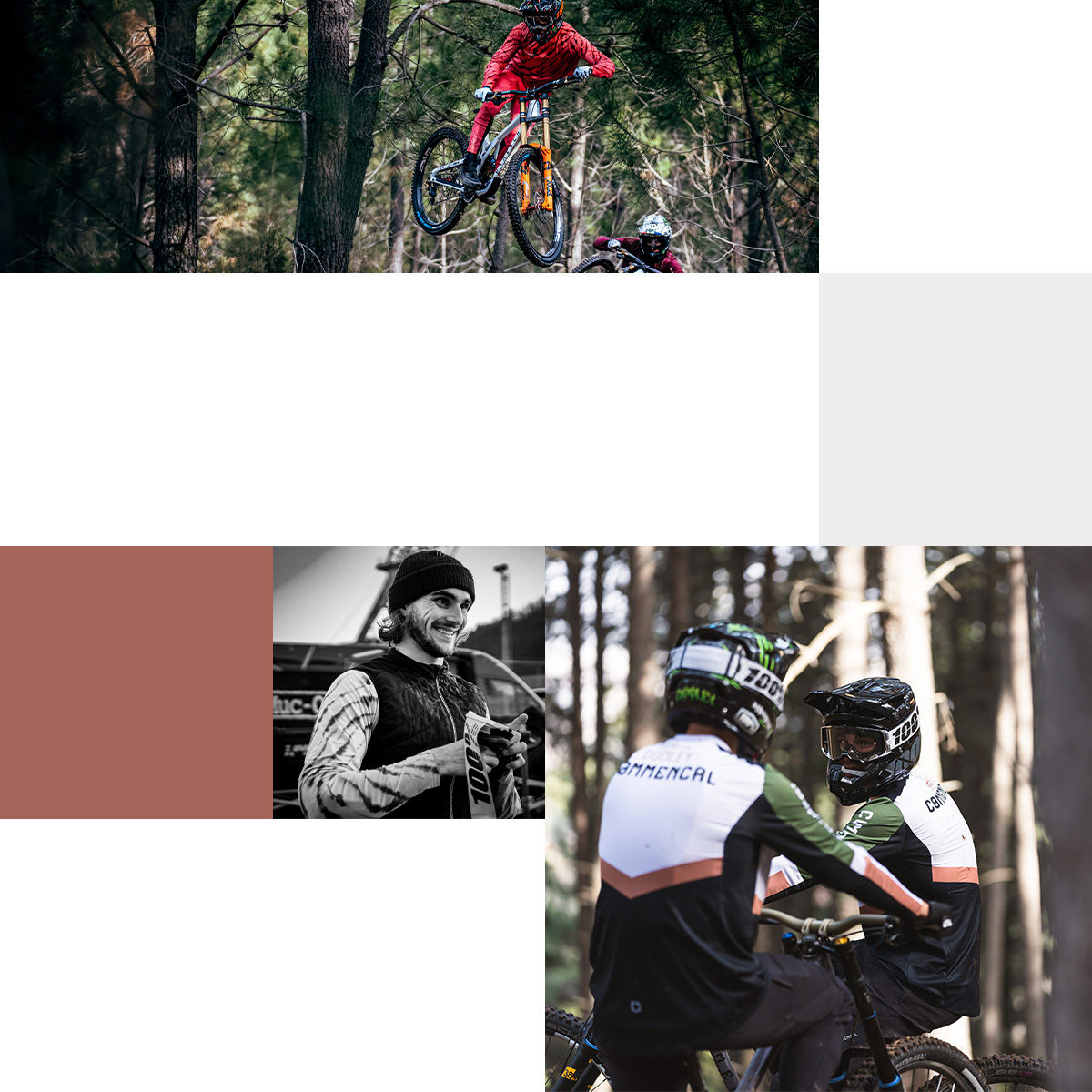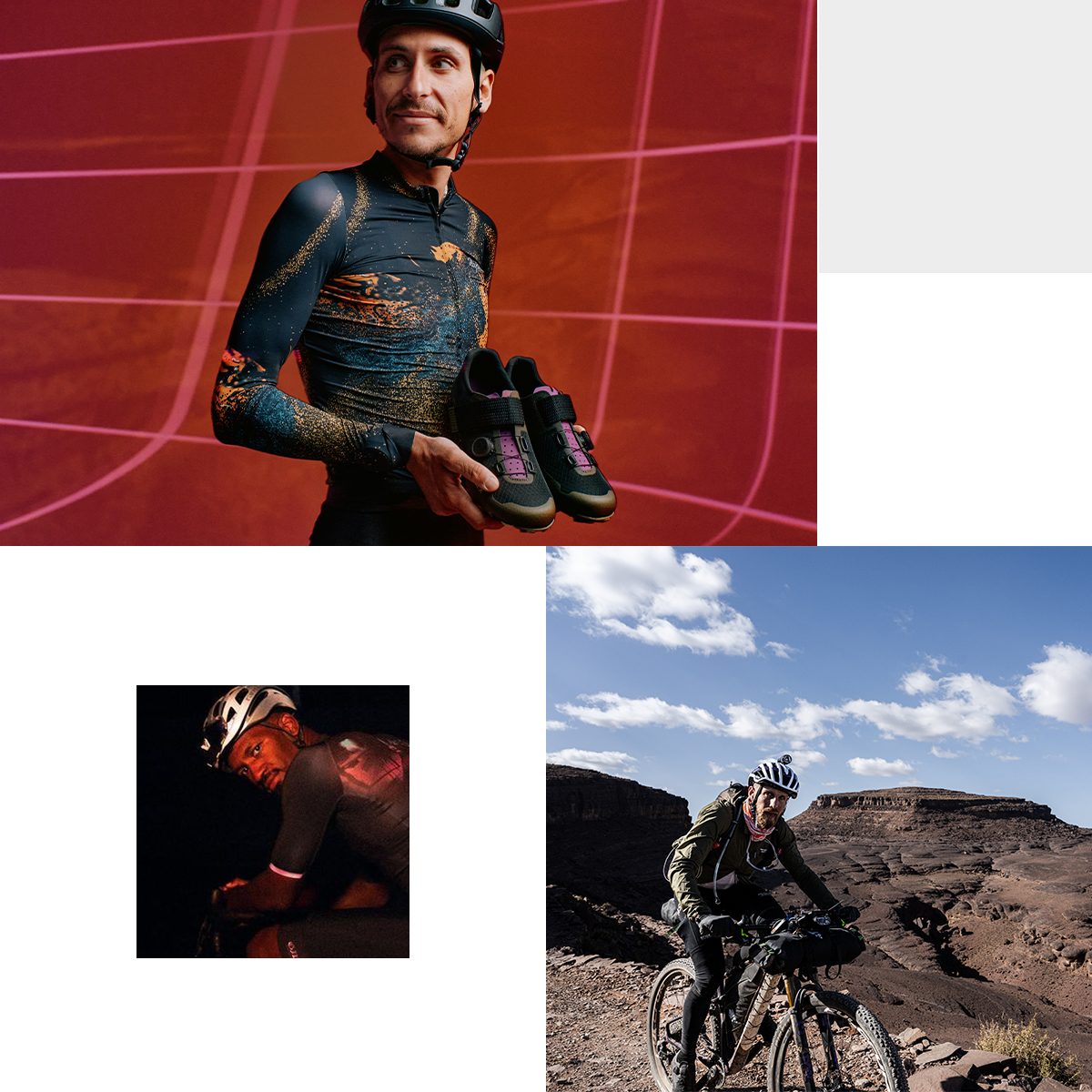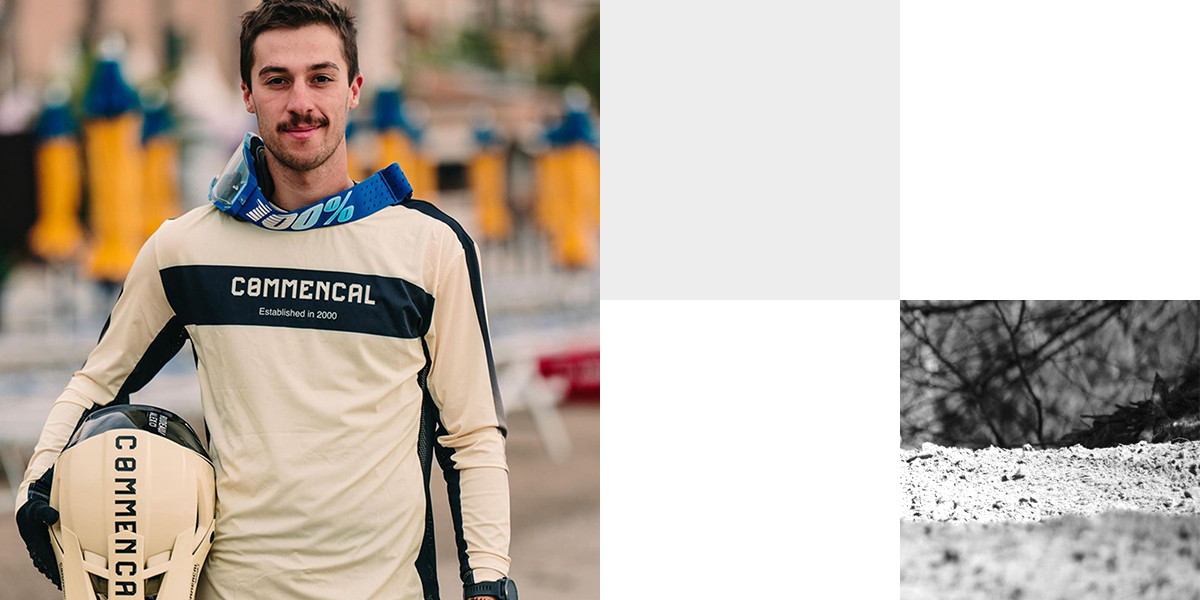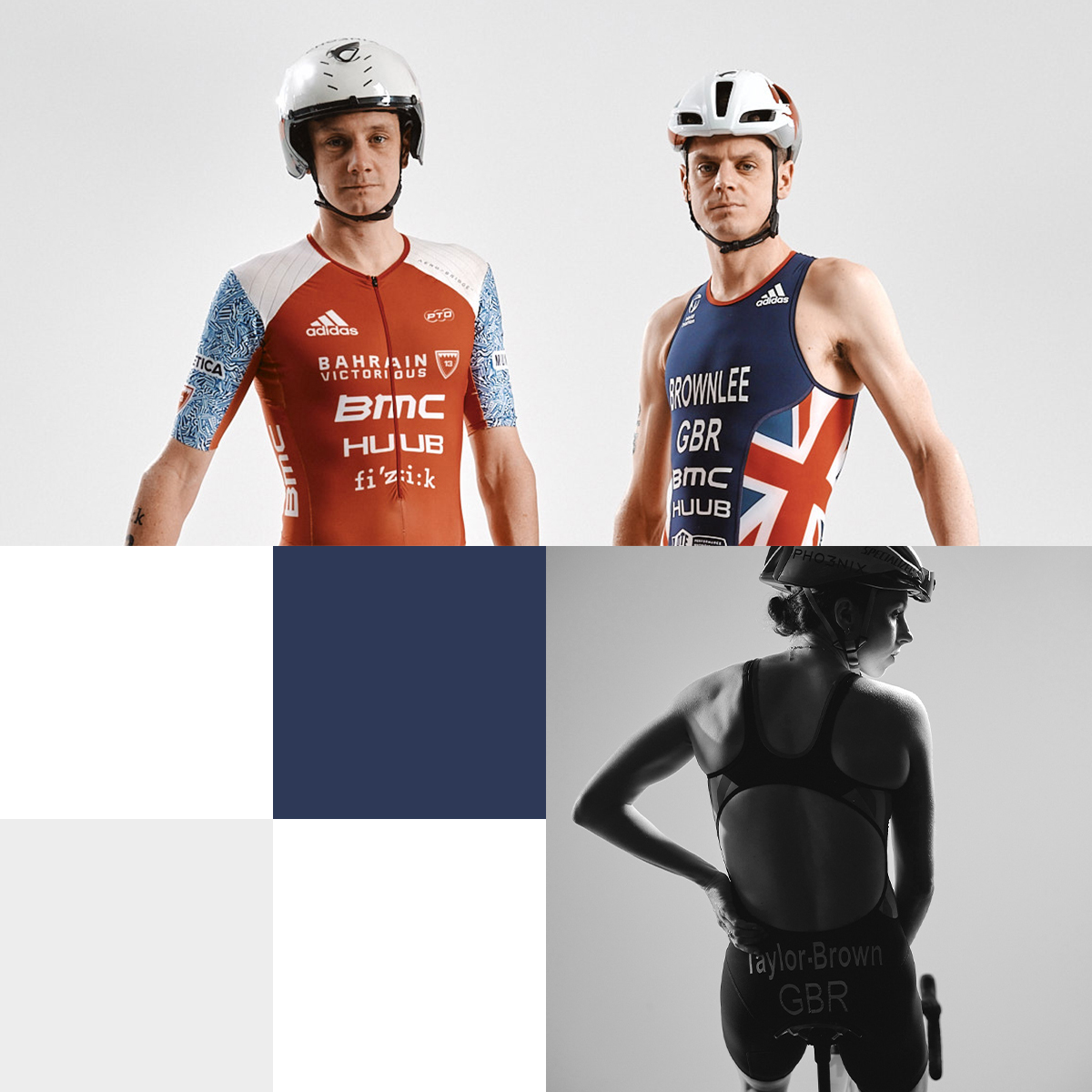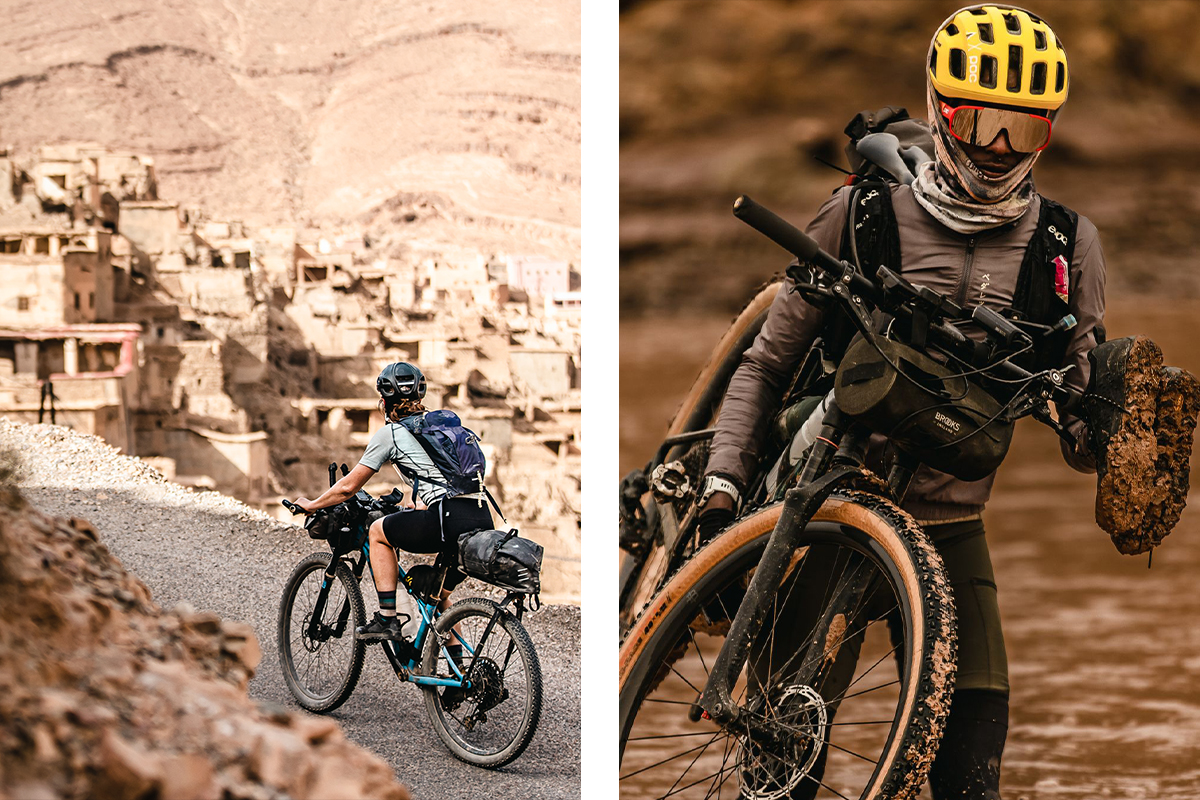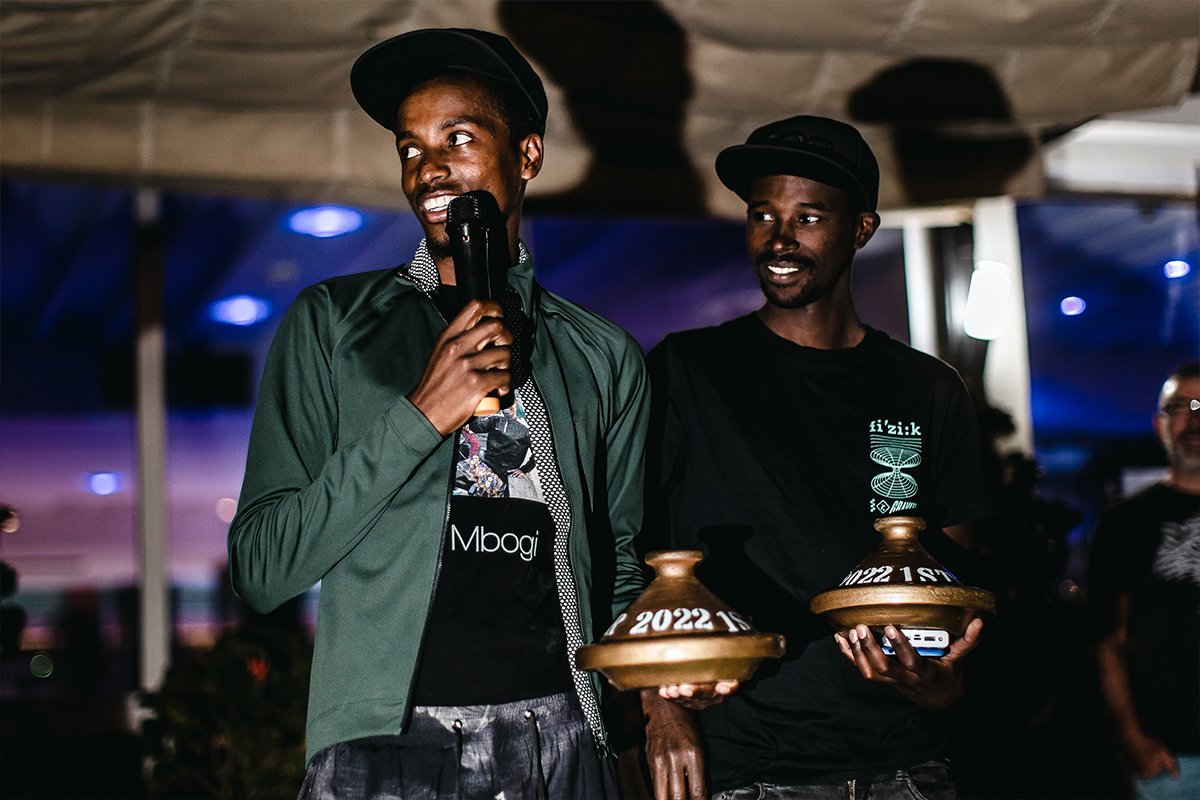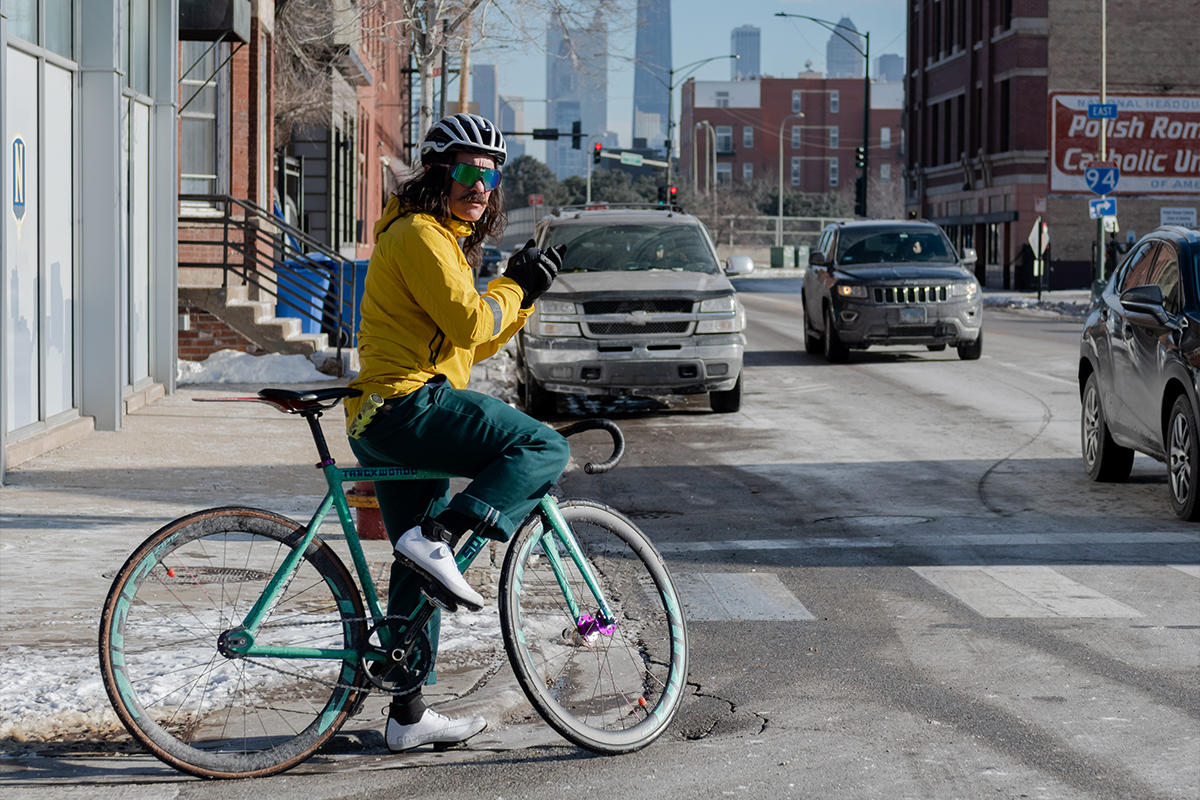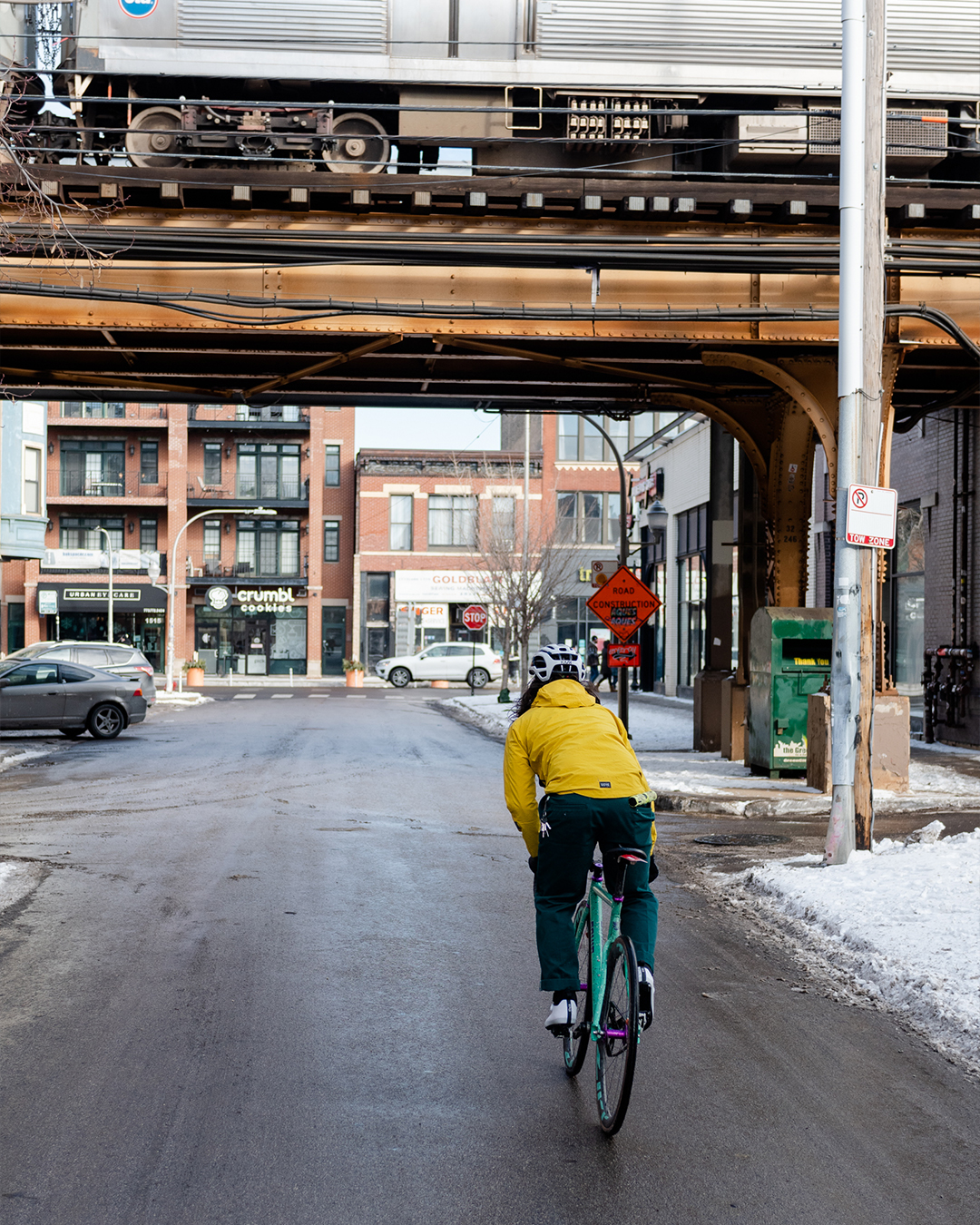Fixed-gear racing isn’t dead. Just ask the members of LA-based riding crew Grupetto, who recently helped support Trinity of Track, three days of non-freewheeling fun hosted by Los Angeles Underground World of Cycling and Trash Panda Cycling. Consisting of a trio of races spanning different disciplines, each united by a locked rear cog, the event welcomed cyclists from across Southern California and beyond, bringing track bikes back to the center of cycling’s spotlight and sparking a movement that once up to speed, as any fixed-gear rider can tell you, can be difficult to stop. Read all about Trinity of Track below.
A BRIEF HISTORY
The tiniest of all sparks has the potential to start a blaze, a concept that we are all familiar with in Southern California. A drought for many years has starved the West Coast and has set the stage for something big to ignite in Los Angeles. Beneath the concrete, the roots of fixed gear culture reach deep, stubbornly searching for a way to quench their thirst in seemingly dry times.
The life of fixed gear racing began with unsanctioned street races in Brooklyn, New York in 2008 and erupted into the international series which many of us know as Red Hook Crit. A scene full of life and prestige emerged and riders around the world traveled, sponsors slapped on their backs, to perform on this world stage. Other races around the world emerged and the fixed gear scene was booming. However, as quickly as the fire burned, the blaze dimmed and in its place were smoldering embers; remnants of something great. But those that say “fixed gear is dead” have overlooked the roots that remain and spread their reach far and wide….underground.
PRESENT DAY
Los Angeles Underground World of Cycling (LAUWC) alongside Trash Panda Cycling hosted fixed gear athletes for 3 days of racing from May 26th – 28th on Memorial Day Weekend. The race series dubbed, The Trinity of Track, would test riders’ skills through a gamut of physical feats which included a hill smash, criterium, and tracklocross race. In the weeks leading up to the series, Gruppetto provided community support by hosting skills clinics for both new and experienced rides.
Race 1: Hill Smash
Montecito Heights, California
The first race took place in Montecito Heights, featuring a 1.8km climb with grades averaging around 4%. This particular hill smash is a tradition, led by Raff Adrian of Trash Panda Cycling, who normally hosts a race at this very location two times a year. The route was scenic, through a quiet hillside neighborhood to the top of the climb which features a view of Mt. Washington and the Griffith Observatory. Residents from the area even came to the roadside to watch the event. Riders started in heats with the top four advancing to the next round. It was a sprint from the bottom to the top, each race lasting not longer than 5 minutes. Gruppetto rider Alfredo Bueno was able to secure top podium spot for the men to kick off the first race of the series. Li King of San Francisco took the top spot for the FTWNB (Femme Trans Women Nonbinary) category.
Race 2: Criterium
Torrance, California
This race required technical skills as riders had to maneuver through a tight chicane and a double hairpin course. Athletes crowded at the sign in table beneath the powerlines, some adjusting their gear ratios while others previewed the course. To make things even more interesting, this race eliminated riders off of the back in an elimination style race.
Approaching the start of the race, in the true spirit of fixed gear racing, LAUWC organizer Victor Marquez stood atop of the podium steps with megaphone in hand, to announce the heats of the race.
Athletes took to the line as the racers started with one neutral lap, then the fire was on. The gravel and dirt on the course could be heard as riders cut through the chicane with their front wheels. The crowd screamed and it was a party at start finish as riders were picked off the back. In the men’s final there was a crash in the last turn making Noah Shaw the victor for the night. Li King won the FTWNB category with ease.
Race 3: Tracklocross
Long Beach, California
The location of the next race was along the Los Angeles River, which begins in Canoga Park and flows approximately 77.1km south, cutting through Los Angeles before letting out in an estuary in Long Beach. To get to this race, one could ride 8km up the Los Angeles River Bike Path from downtown Long Beach, a ride that would only take about 20-30 minutes. Alongside the river path there is a patch of land, blooming with wildflowers from this season’s rain, and the best motocross dirt circuit that is the perfect backdrop for a tracklocross race. The course featured 3 embanked turns and one 5m drop-in. Year after year riders come to this circuit to test their brakeless off roading skills at this very track and each year. Spectators huddle near start finish and of course by the drop in which is the best place to view all of the crashes. As riders skidded and smashed through the dirt, the crowd jumped in to offer a beer and a push for any crashed out riders so that they could finish their lap. David Frias would take first place for the men and Avery Masri would take the win for the FTWNB.
At the end of the series, the overall winner from each category would be awarded based on the points they accrued throughout the three races. Each rider would be crowned the winners of the Trinity of Track and would receive swords fabricated from spare bicycle parts. The men’s winner was Noah Shaw and the FTWNB winner was Li King.
This past Memorial Weekend the fixed gear community united, not only in remembrance of nostalgic events like Red Hook Crit, but to ignite the scene once more in Los Angeles and bear witness to the resurrection of fixed gear racing. With race series like Trinity of Track emerging and a new younger generation of athletes coming out, there is a buzz through the streets that is getting fixed gear athletes anxious with excitement. Because we all know, that it only takes a spark to start a fire, and fixed gear will be here to fan the flames.
It’s May, and that can only mean one thing: Grand Tour season is upon us. In just a few short days, cycling’s leading athletes will set out on yet another hero-making, history-shaping competition en route to donning the Maglia Rosa. As we anticipate the opening stage of the 106th Giro d’Italia, let’s take a quick look at some of the fastest riders poised to make waves in this year’s race.
A CLIMB TO REMEMBER
Perhaps one of the most memorable moments of the last Giro unfolded on the steep slopes leading up to a finish atop the Passo Fedaia, a.k.a. the Marmolada. It was here, on the race’s penultimate—and Queen—stage, that Italian rider Alessandro Covi pulled off an astonishing 53-kilometer breakaway to claim his first World Tour win. Making his escape at the foot of the 2,239-meter-high Passo Pordoi, Covi gained ground with each pedal stroke, earning the Cima Coppi before winding his way back down and onto the race’s final climb: the 14-kilometer Marmolada.
His closest competitor, Domen Novak, gave chase, but was ultimately unable to close Covi’s impressive lead which saw the young rider celebrating a hard-fought stage win together with his fresh Cima Coppi title. As for how Covi felt about the finish:
We look forward to seeing what big moments Alessandro Covi has in store for this year’s La Corsa Rosa.
A RIDER TO WATCH
2023 will mark Filippo Zana’s fourth Giro d’Italia experience—but it will be his first with a World Tour team, Team Jayco AlUla, as well as his first wearing the Italian Nation Champion’s jersey, an honor he takes seriously. It will also be Zana’s first Giro outside of the Young Rider’s classification. Yet what he might lack in years, he more than makes up for in talent, experience, and enthusiasm.
Zana has been hard at work, training in the lead up to this year’s race with a Giro-specific approach that has included early-season challenges such as the Strade Bianche. As for Zana’s goals for the Giro, he’s aiming to do his new-found Champion’s title proud by pedaling his way into as many top positions as possible on the long road to Rome.
AN OUTSTANDING COLLECTION OF TALENT
For years, it has been our honor to partner with many of the top teams in the sport in their annual competitive pursuits, with the Giro acting as perennial proving ground to kick off the big three Grand Tours. For 2023, we’re excited to throw our support behind, and performance beneath, the following teams and riders:
AG2R Citroën: With a stacked roster full of talented riders, this leading French team promises to push the tempo in each stage. Individuals to keep an eye on include Aurélien Paret-Peintre and Felix Gall.
INEOS Grenadiers: Hungry to reclaim the top title after big wins prior to last year’s second-place GC finish, we’re watching the INEOS trio of Tao Geoghegan Hart, Geraint Thomas, and Filippo Ganna.
Movistar Team: Of course, it wouldn’t be a star-studded race without the riders of Movistar Team. Expect Movistar veteran Carlos Verona to do big things in his return to the Giro alongside new teammate and powerful sprinter Fernando Gaviria, who will be hoping to pair his Movistar debut with a reappearance in pink.
Jumbo-Visma: And last, but certainly not least, are the riders of team Jumbo-Visma, helmed by Primož Roglič, who’s already shown he’s ready to win big in 2023 Italian stage racing, taking first place at Tirreno-Adriatico in March. Roglič will be joined by Edoardo Affini and Tobias Foss for what promises to be a thrilling three weeks.
As we count down the hours till the tires start spinning in the Giro’s opening time trial, we look forward to seeing how this year’s race unfolds. Good luck to all the riders and teams!
Photo:
Tornanti.cc – Filippo Zana
Andrew Jackson has spent his life on two wheels, first as a motocross racer, then as a BMX rider before a series of injuries in each sport led him to rethink his specific riding discipline. Of course, a change of direction is no big problem for an athlete like Andrew, whose current path is carrying him through the fast-paced world of gravel and road racing. We spoke with Andrew to welcome him as out newest fizik ambassador and to learn a bit more about his exciting, ever-changing journey.
It’s always been two wheels for you. What first led you there?
Since before I can remember. I brought a motorcycle to show-and-tell at school when I was five. I assume my parents led me to it, but they say I just loved it.
How did growing up in L.A. influence that journey?
My time was split when I was a kid between motorcycles, when I’d go to my dad’s in the country, and BMX bikes, when I’d be in the LA, until I was around 13. I think it was more me just loving to ride wherever I was when I was really young. Then later, riding the streets on my BMX definitely shaped my style, I think.
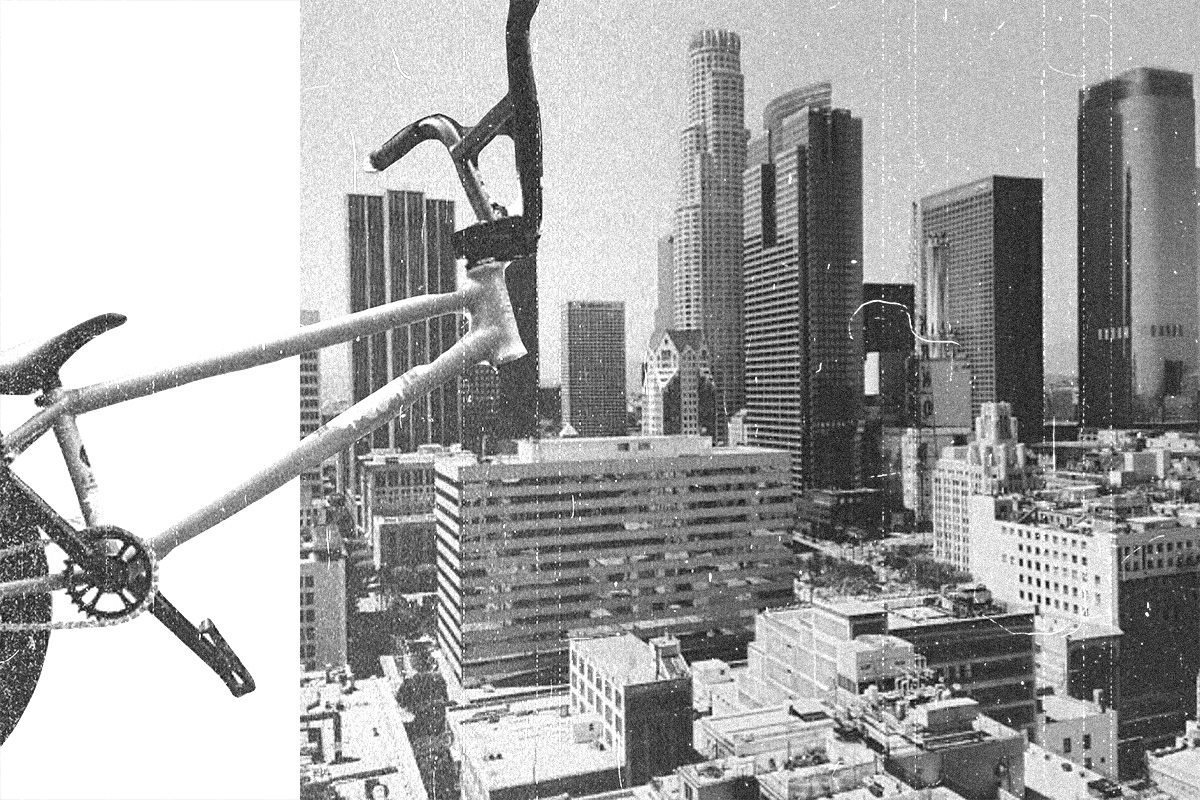
Tell us about the accident. Was there any point where you didn’t think you’d get back on the bike?
Man, I was riding with my friend Gabe Brooks (RIP). I 180’d off this ledge, and my foot slipped off, and the pedal just smashed my knee and bent it the wrong way. I tore my MCL, PCL, LCL, ACL, Meniscus and broke the tip off my femur. Basically, my knee was destroyed. The doctor told me there was no way I was riding bikes professionally anymore and hoped I would just be able to walk without a limp. I didn’t ever believe that, but it wasn’t looking good for a couple years, haha.

What do your scars mean to you; what have they taught you?
Reminders to not make those mistakes. It sounds harsh, but that’s being honest.
How does major setback better prepare you for comparably minor challenges?
This goes really far into who I am as a person. I’ve been an athlete since I was young, and when you put everything into your sport, it becomes your identity. Your friends, your days revolve around it, everything. So, it has made me reinvent myself multiple times. When I was younger, I was on the way to being a professional motorcycle racer. That dream was taken away when I ruptured my kidney. Then I rebuilt myself and became a professional BMX rider. That was my life for 10 years until the knee injury. Now I’m doing it again in road and gravel. It’s tough to keep doing it, but I think I’m much happier when I’m pushing for something.
None of what you’ve accomplished happens without incredible determination. What motivates you to keep moving forward, regardless of riding discipline?
I think I’ve realized pushing myself and learning is where I’m happy. I don’t mean that to say I have it all figured out, by any means. I’ve questioned things and taken big chunks of time off. Road/Gravel racing has been a long road to build my body into being an endurance athlete from my other sports which were more technical and strength based. Every time I want to give up or do this recreationally as a just hobby, I’m left with this question of “what if?”. I just want to see where I can take it and where my peak is, and that’s what I wake up in the morning excited about.
How much of your BMX experience do you bring to your new gravel/cycling world?
A ton. Mainly, it helps picking up advice and applying it because I have the experience already. The sport is new, but the formula is the same: Work your ass off, haha. It’s just figuring out where to focus the energy. The style aspect is huge in BMX, so that’s big, too. And of course, bike handling and just being comfortable. Who knows how many hours I’ve spent on a bike over the years.
Is there anything you miss about your more adrenaline-fueled pursuits? Does gravel cycling scratch that itch?
Honestly, no. For BMX, I was a pro for ten years and got to travel all over the world with all the best riders. I kind of knew what was possible on a bmx bike and had seen so many amazing riders that nothing really surprised me anymore, especially with street riding. It’s hard to explain. I would get more excited about a little kid jumping his first jump than the newest gnarly trick or video part just because I knew the sport so well. With Gravel/Road, everything is new for me. I ride with people like Lucasz Wisniowski or Justin Williams, and I get so excited because they do things I didn’t know were possible. Like Lucasz just pedaling super hard all day long casually or Justin showing me you can still sprint 1800 watts when your legs are burning and you thought there was nothing left. Just seeing the way the good guys ride and pedal. I can’t do all those things yet, but it excites me to try and figure it out.
What does road/gravel cycling give you that motocross/BMX didn’t?
I think they are all really similar. They give me an outlet to push myself and learn.
How do the communities differ between disciplines (MX, BMX, Gravel)?
All three are so different. The level I was at in motocross, even though I wasn’t pro, was closer to what I imagine world tour cycling is like. I rode for Kawasaki, and we had team buses and full mechanics, three to four bikes, and everything at nationals, very serious. BMX is the complete opposite of both. Just grimey kids traveling the world and making it work, but the talent level is the same. Gravel seems somewhere in between the two. It’s a little uptight sometimes, but we are trying to change that, haha.
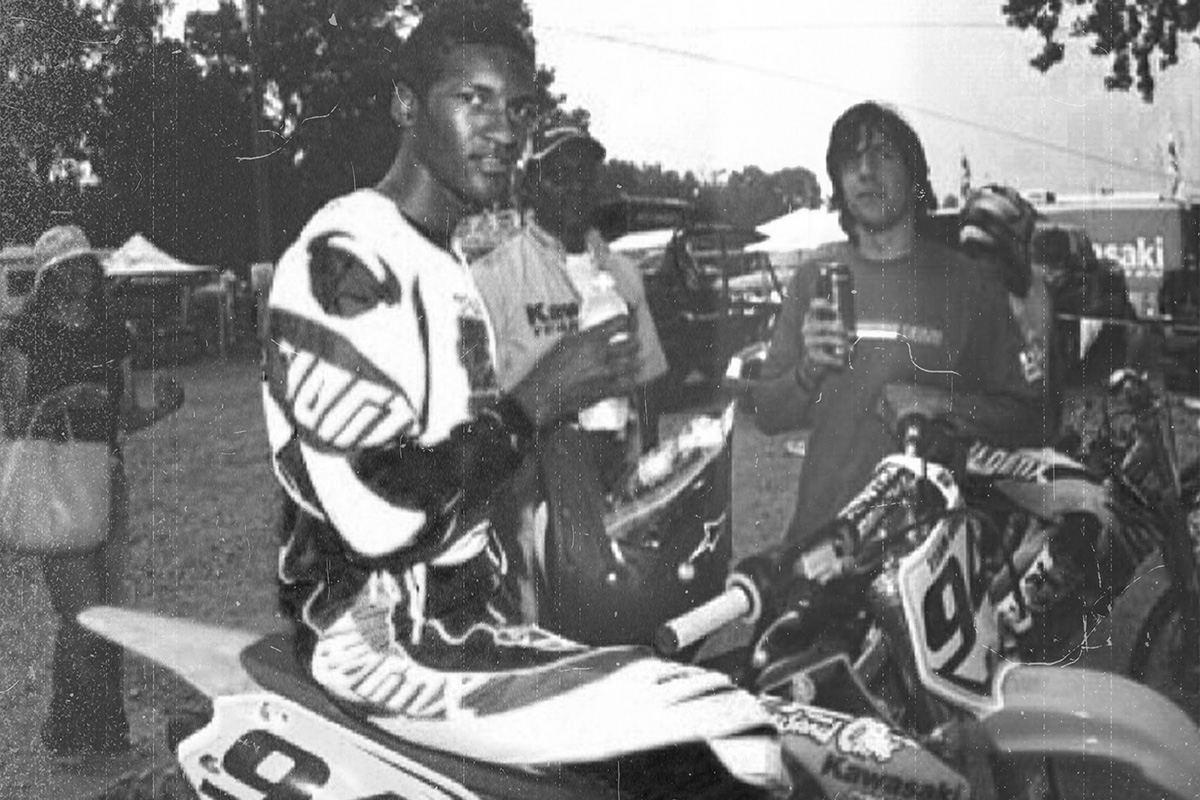
What advice would you offer to others working to come back after their own time off the bike? How about those entering the sport for the first time?
I definitely have plenty of experience here. I think, just focus on having fun and loving what you’re doing first. So many people get caught up in “training” and miss all the fun stuff about riding a bike. I’m mind blown when people fly up hills just to creep back down because they think descending is unsafe. Also mix it up. Dirt’s not your thing? Try dirt. Climbing isn’t your thing? Try climbing. To me that’s what makes it fun. It gets hard later, but in the beginning, it’s so easy to make giant improvements all over the place.
What’s next?
Who knows, at this point. I never even thought I’d make it this far, and that’s being honest. I’m just going day by day and seeing where I can take it from here.
Words by Andrew Jackson
Photo – Rebelvandal ; Andrew Jackson
Traveling by bike provides a great opportunity to explore new places at the perfect speed for discovery—and it also offers an ideal situation for learning the ins-and-outs of your riding partners. Join travelers Lina Bo, Maria Larroy, and Pol Tarrés as they take on the tough backroads of Gran Canaria and build stronger bonds en route.
Pol Tarrés and I are both adventurers with experience. We’ve each taken numerous long trips visiting many places, so it was a great to finally have the opportunity to travel together in Gran Canaria. I have known Pol for about a year, and we’ve shared several short rides together. But over four days in Gran Canaria, I got to know him better and discovered we are quite similar. We both don’t really like to talk much when we ride—first of all, because sometimes the terrain is very hard, and secondly, nothing can replace the experience of pedaling in paradise, alone with your thoughts.
And of course, the landscape on Gran Canaria influenced this desire to feel alone; the mountains were so big that we felt small. It is an amazing island where you can find all sorts of terrain, ranging from barren desert mountains that look like the Grand Canyon to lush green vistas that resemble Colombia.
Sunny Skies and Steep Climbs
We stayed in Maspalomas, and the first day we climbed a pretty famous Gran Canaria climb, from Arteara to Fataga, returning from the other side through Santa Lucia. It was very hot that day, and we all got a lot of sun, the proof in our fresh tan lines. The first climb was long, 45 kilometers, with some very steep sections at the end. Also, the road was pretty crumbled all the way up.
We stopped in a bar somewhere around 35 km in to buy some water, with a further 10 km to go on the climb. I was pretty tired already, and my mind was all over the place. We continued climbing, and after 4-5 kilometers, I realized I had forgotten to pay for the water. Oops! I felt bad, but I didn’t want to go back down only to have to climb the same 5 km again.
Adrift at Sea
On the second day of riding, we encountered even more thrilling experiences. We were joined by my friend Pedro, who acted as our local guide for the day. Our first challenge was to climb Soría, a 20km uphill trek with steep sections towards the end. We then descended to Mogán, where part of the road to Maspalomas was under construction. To get back, we had the option of taking a taxi on the highway or taking a boat to Puerto Rico de Gran Canaria. We opted for the boat, as it promised to be more exciting.
As we embarked on the boat, the scenery was breathtaking, but our joy was short-lived as the boat suddenly broke down and lost control. It was a terrifying and amusing experience at the same time as we tried to navigate the damaged boat, which collided with other vessels. Despite the mishap, we managed to reach the pier with the help of another small boat. Although we were hungry and tired, and had 20km left to reach Maspalomas, the adventure was worth it.
Windy Riding and Righting Wrongs
On the third day, Maria joined us for the next stage of our adventure. Although we had planned to ride together from the beginning, Maria was not feeling well during the first few days. We started our route in the west, parking in El Cruz. The day was nothing short of epic as we rode 140 km through three distinct landscapes. The first part of the route reminded me of a scene from Game of Thrones, with strong winds and small rocks hitting my sunglasses and hands.
We braved the wind and made it to Agaete, where Maria decided to wait for us in the car as she was still feeling weak. After lunch, we considered turning back because of dangerous winds, but we pushed on. As we ventured further into the mountains away from the sea, the winds died down, and the landscape transformed into lush, tropical greenery reminiscent of Colombia. We had planned to make a loop back to the car, but we decided to continue to Maspalomas, passing by a bar where I had forgotten to pay for water, which I promptly remedied. It was an unforgettable experience crisscrossing the entire island.
Navigating Past Sunset
On the fourth day, we had a short ride with Maria in the morning before returning to the hotel for lunch. Pol suggested we explore more routes for our final day, and I agreed. We started our route late from Mogan, with the option of shortening it if we ran out of time. The first part of the route was awe-inspiring, with narrow roads and no cars in sight. We took our time, stopping at every corner to take photos. At one point, Pol suggested we take a shortcut, but when I looked at the road, I felt the original route was easier. We were wrong. The new route was steep, and without a GPX file, we were unaware of the four steep climbs ahead of us. We were unprepared, with no food, water, or lights.
When we reached the top of the last climb, it was already 7 pm, and we had a 25km descent ahead. As the sun went down, my phone died, and I could barely see the white lines on the road. I lost sight of Pol, and fear crept in, but I soldiered on, calling out his name. Eventually, we reunited, and we made our descent together, with me following Pol’s white socks and boots in the dark. The last 6km were particularly daunting, but we made it back safely. The experience was unforgettable and just the kind of adventure I was looking for.
You can follow Lina’s adventures on Instagram @lina_bo , Maria @mlarroyt, and Pol @pol.tarres.
Photo:
Apper Studio
For most riders, the goal of any race is to reach the finish first — or at least to do so as fast as possible. But is finishing position — or finishing at all — the only value that matters? Based on Austrian cyclist Nora Turner’s recent experience taking on the Gran Guanche Audax Road Race, the answer would be a resounding no. Dive inside her exciting, difficult, unforgettable first Ultra attempt below.
Small Victory: Getting to the start
Normally, you would read texts like this one from winners. About people who have pulled something through with an iron will, fighting until the last second! This is not one of those texts. Who am I? I’m Nora, 28 years old, from Vienna—and I’ve been riding road and gravel bikes for almost six years. I started quite early with classic bike marathons and crits, but I had never done anything that lasted longer than 24 hours.
So, what is the race? The Gran Guanche Audax Road Race is a single-stage unsupported 600KM race with 14,000 meters of altitude across five Canary Islands—always on the relentless hunt for the next ferry. My plan? Lanzarote and Fuerteventura on Day 1, Gran Canaria and the foot of Teide in Tenerife on Day 2, Teide and a bit of La Gomera on Day 3, and then a relaxed finish at midday on Day 4.
Arriving in Lanzarote, I unpacked my bike at the airport, drove to Orzola — the starting point — and was barely in my apartment for five minutes when I decided I had already made it to the start line, why shouldn’t I celebrate? At the supermarket I bought everything for breakfast the next day and some snacks and walked to the beach. I was close to tears of joy as I stretched my feet into the Atlantic Ocean and then enjoyed the sunset at 20 degrees!
The next day I cycled to Puerto del Carmen, 55km with a tailwind, to get my race number and spent the evening feasting with other participants from Vienna. Bags were mounted on the bike, tracker attached, batteries charged, and I had trouble falling asleep due to the nervousness. The weight of the bike including water in three bottles was about 16kg. The weight of my pre-race-jitters? Even heavier.
Two Days and Three Islands – Days 1 and 2
The race started at 8 a.m. directly uphill to a viewpoint of the cliffs, which I had already admired from below on my way to the beach. While most of the other participants pedaled right past me, I rode my usual uphill pace. Unfortunately, we “slow ones” were directly affected by the moods of the weather: after 10 kilometers, right before the first descent, it poured cats and dogs!
With rain showers, sunshine, a few serpentines, and always chatting with other participants, we went uphill and downhill—until we had to ride a bit against the wind in Teguise. On the descents, the constant 42 km/h winds, with even stronger gusts, had pushed me around on the road a few times, but now it was getting really scary. While Lanzarote had so far been alternately a bit desert-like and then green again, I now rode into a volcanic national park — and with a tailwind.
After a long descent on a perfect cycle path, I arrived at the port of Playa Blanca at just the right time and pushed my bike onto the planned 13:30 ferry. Nevertheless, I also experienced my first real low here on the ferry: I had felt uncoordinated in the first few hours, was slower than planned, and often had to struggle with anxiety and fear.
For the first 20 km on Fuerteventura, the tailwind blew me along a beautiful windsurfing beach with large dunes, before I rode through a few hills and a red-rock landscape with my “friend”, the crosswind, towards Tindaya. My brake pads must not have taken the frequent scare-braking, the wet and the sand so well, because even in the dry they made noises that you definitely don’t want to hear and were grinding relentlessly. A quick roadside brake-pad change, during which the wind blew my mounting screw into the sand leading to a 20-minute search, brought me even closer to sunset.
I continued on my way, all alone here on a wide corridor; the region is quite rural. The others were either far ahead of me or had made themselves comfortable to sleep behind me. In front of me, however, a wall of stone was building up, and I could already see from the foot of the mountain, at an impressive height, what I was about to cycle up. Crank turn after crank turn, I pedaled up the mountain, mostly in the middle of the road because I’m afraid of heights. The descent was dark — darker than it had ever been around me. Wet, slow, difficult, and I was just done with nerves.
I was so glad when I made it to Betancuria, where at least there were streetlights, and I had to sit down. Another 1,500 meters of altitude and 70 kilometers in this condition was a very, very bad idea for me. A different solution was needed: a hotel for tonight. Several calls, everything booked up, even off the route. Not even a couch in hotel lobbies or a garage. But then I discovered three more paused trackers in the village. I hadn’t exhausted my luck for the day just yet. The Trio Infernal, as I would later call the Spaniards Victor, Alex, and Alvardo, offered to put me up in the spare bed in their flat. And they even ordered me something proper to eat while I was on the way! Was this a dream?
We had a really nice evening together. We exchanged stories about our setups, the various challenges of the previous day and the upcoming one. We made plans for tomorrow and then went to bed, totally exhausted but happy.
I would have caught my second planned ferry from Morro Jable at 6:30 if I had pushed through the night. The next one didn’t leave until 4pm. This meant a relaxed day and the opportunity to make realistic plans for the second night. I was glad I hadn’t done the beautiful road through the impressive rock gorges in the dark, because I couldn’t stop grinning: it’s so beautiful here! In Pajara, after the first major climb, we had a delicious breakfast of freshly squeezed orange juice, bocadillos(sandwiches) and coffee. Pajara means something like “bonking” in sports, by the way. No bonking on that day after the Pajara breakfast for me, though!
I then continued mostly alone on a really perfect cycle path through dunes and hills alongside a motorway. I have never seen anything like it. The asphalt was just absolutely gorgeous and the sea on the left was a perfect distraction from the little engine noises on the right. From Costa Calma onwards, the highly touristy part of the island began, but Fuerteventura should not be reduced to only that!
After rejoining my Spanish friends for a delicious lunch, we boarded the second ferry to Gran Canaria. Strong swells and another mental low made it not exactly the perfect break. But we had a plan: today we would ride in the dark through the densely populated coast to the foot of THE climb on Gran Canaria.
Together with two Germans, we rolled through the rather large city of Las Palmas and began the climb. Here we kept passing through small towns, which was extremely reassuring for me, but the Spaniards were all over me and I couldn’t ride downhill like they could. Instead, I met Juli from Bavaria and asked to ride a bit together. We both happened to have booked accommodations at Ingenio and got along great from the start, rode at a similar pace and I just felt incredibly comfortable around her.
After a really nice and relaxing ride into the night, I raided the local Spar, checked into my room in an old camel yard and was even able to wash and dry my jersey. The host had to smile when I looked at a cozy standard room and asked, “What? This is ALL for me?”
The Ride Continues, until it Doesn’t—Days 3 and 4
Juli and I met in the dark at 7:15 and ate altitude meters for breakfast. Legs already shaken from the days before, bikes full of water for the remote area — so heavy. But our mood? Great! We changed between chatting and struggling on our own. In places, I had to push my bike. Although the general conditions don’t really sound like a great time, it was a wonderful morning for us. In hindsight, I really have to say that with the packed bike and this amount of elevation gained in such a short distance, it was the hardest climb I have ever done. After almost 2.5 hours uphill, we were finally above the clouds!
The views were absolutely fantastic! Mount Teide on the neighboring island of Tenerife seemed almost within reach. The descents were partly on older, broken roads, but through absolutely impressive surroundings. We rode on in a huff and were in good spirits to make it to the 4pm ferry.
Gran Canaria is a well-known road cycling destination, and you could see that on the roads! One absolutely fantastic view after the other and nice villages with nice cafes. Even today, I often think back to this simply perfect day in Gran Canaria! On the ferry, we ate some more and made a plan to ride about 40 more kilometers together on Tenerife through the Anaga Forest to the foot of the Teide, before recovering for the King’s stage.
Into the sunset we rode the constant climb towards the mountains in the north of the island, in good spirits, because we were together! We both had been struggling with fear in remote areas at night, but together we could manage that. Or could we? The moon, barely thinner than a crescent, was the only source of light here apart from our front lamps, and we drove through a forest that certainly looked beautiful and enchanted in the light.
We had stopped in a small village when fear literally shook us as one of those mean shepherd dogs came running at us! I had heard “Beware of the Anaga dogs” before, but I had no pepper spray or stones in my pockets to make it past the dog. We preferred to make a run for it, back to a small house where three gentlemen were drinking wine and screwing around with their car. We asked to rest a little on a bench sheltered from the wind, safe from the dogs, and wait until a bus could come and take us to our hotel. Tomorrow was a new day; we had done our work for today and just wanted to be safe. Once there, I booked a transfer to take me back to the point where we had boarded the bus for the following morning. This is allowed at such races if the service is available to all participants.
The next morning, however, I woke up to an email that my transfer had been cancelled. And Juli woke up shaken by a cough, knowing that she would not make it over the Teide without risking serious health consequences. So, I was alone at the foot of the Teide. I could have cycled two hours back to the point where we took the bus, done the bit of road again and THEN cycled over the Teide. Or I could have counted on the goodwill of the bus drivers in rush-hour traffic to drive my bike and me up into the Anaga Forest, which would have cost a lot of time and even more nerves.
But at that moment I didn’t have the nerves anymore. The night before, when we were on the bus to La Esperanza, I said to myself: worst case, you’ll just do the Teide “like that”, not as part of the race, but outside the Audax classification. So, the decision to scratch was not spontaneous.
The email was written quickly. I wasn’t sad, rather a bit angry and disappointed because of the transfer that had let me down — but that’s how it is with Ultras. Brought back down to earth by the fact that despite the race, I couldn’t get out of my skin and wasn’t magically suddenly faster at descending; this is where I really lost the most time. Irritated that the darkness on the Canary Islands was so much harder for me to handle than during night rides in Austria. But most of all: freed from the pressure I had put on myself in the last few days.
You can ride along for more of Nora’s adventures on Instagram at @unicorncycling.
We’re already two months into 2023 with warmer weather just around the corner, and that can only mean one thing: racing season is upon us. Of course, at fizik, our excitement is widespread. We’re proud to stand behind both teams and individual athletes across a variety of riding disciplines—from Road to Gravel racing, Downhill to Cross Country and Enduro—even the multi-sport members of the competitive world of Triathlon. No matter the individual race, or the terrain beneath our riders’ tires, we look forward to rolling through another year of big challenges, decisive moments, and unforgettable memories together. Read on to learn more about where we’re headed in the months to come.
ROAD CYCLING
With a never-dull calendar full of fast-paced cycling competitions, the 2023 UCI World Tour is already underway, including a big opening win for fizik rider Dylan van Baarle of Team Jumbo-Visma at the Omloop Het Nieuwsblad, the first of this year’s Belgian Classics.
As we move through the exciting early-season races, including the upcoming Strade Bianche, Milan-San Remo, and more, it’s hard not to feel hopes rising for our favorite Grand Tours: The Tour de France and the Giro d’Italia. Given the historic victory of Jumbo-Visma’s Jonas Vingegaard in the 2022 TDF, as well as Richard Carapaz’s massive second-place effort in the Giro—alongside the bevy of talented individuals that make up the teams we support—it’s easy to see why expectations are high for this summer’s biggest stages.
In men’s Road cycling, we’re once again sponsoring the riders of teams Jumbo-Visma, AG2R, Movistar, and the INEOS Grenadiers. In the world of women’s Road racing, we’re thrilled to support Jumbo-Visma as well as Team Movistar, whose ranks include repeat World Champion Annemiek van Vleuten, the winner of all three of last year’s women’s Grand Tours: The Giro d’Italia Donne, the Tour de France Femmes, and the Challenge by La Vuelta.
In addition to the well-established European World Tour teams, we’re also proud to announce our support of the USA’s hottest new racing team, the Miami Blazers, a multi-cultural, multi-national cast of crit racers poised to set the American circuit on fire.
As for individual athletes, we’re rounding out our line-up with sponsorships of Italian riders Alessandro Covi, Filippo Zana, and Luca Mozzato and the Spanish National Road Champion Carlos Rodriguez.
CROSS-COUNTRY
Moving from the tarmac to XC trails, training is underway as Cross-Country athletes look towards the opening stops on the MTB World Cup. In the meantime, we’re starting our season early with a new collaboration, partnering for the first time with the men and women of mixed-team Santa Cruz-Rockshox: an all-Italian cohort helmed by two-time 2022 World Cup winner, Luca Braidot. We’re stoked to share every twist and turn of the trails in the season ahead.
From new faces to familiar ones, we’re also pleased to announce our continuing support of France’s Rockrider Racing Team, who are ready to follow-up their exciting debut last year with an expanded roster and bold plans to go big in 2023.
Of course, team efforts aren’t the only ambitions we’re supporting this XCO season. There are also plenty of individual athletes who will be pursuing their paths to victory together with the performance of fizik, like last year’s European Cross-Country Champion, Loana Lecomte. She’ll be joined by the U23 World Champion, the young French cyclist Line Burquier.
For Ineos Cross-Country, two multi-discipline athletes, Tom Pidcock and the 2022 Women’s World Champion, Pauline Ferrand-Prévot, will navigate the competition this season both perched atop a fizik saddle.
While the first stop on the Cross-Country World Cup may still be some months away—the weekend of May 12-14 in Nove Mesto, Czech Republic—the local trails for each rider and team are already buzzing with feelings of excitement, and the sounds of spinning freewheels, in anticipation.
DOWNHILL
The 2022 Downhill racing season earned the riders of Commencal / Muc-off several significant victories, including a World Cup title for Amaury Pierron and silver medal for teammate Myriam Nicole. To continue down that winning path, we’re thrilled to announce our ongoing support of Team Commencal / Muc-off riders throughout all the adrenaline-pumping, high-flying excitement that 2023 promises to provide. Beyond our overall team support, we’re equally eager to continue rolling with Thibaut Dapréla, whose debut dream Gravita shoe became one of the many highlights of last year’s wild ride.
The men and women of Commencal / Muc-off won’t be the only riders enjoying the Downhill prowess of fizik performance. Our sponsorship panorama is growing substantially for the upcoming season as we welcome the Canyon CLLCTV FMD Team, Commencal IC Studio, Commencal / Schwalbe, Unno Apex and Rogue Racing into our fast fold.
World Cup Downhill racing kicks off this summer with a season opener at Lenzerheide, June 9-11, followed by a busy schedule of events across Europe and North America that’s sure to hold more than a few big surprises along the way.
GRAVEL AND ADVENTURE
Riding on the wilder side of the sport, Gravel and Adventure racing have been at an all-time high over the past few seasons—with new events and an ever-more-competitive field of athletes racing to claim the top spot in some of the most extreme cycling challenges on the planet.
Launching for the first time this year, the Gravel Earth Series unites some of the best existing and new off-road endurance events into one unified program, and we’re proud to see the fizik name as official partners of the initiative. Riders who take on at least two regular-season races in the series will earn points at each stage, with an overall winner named for each category at the end of the season following the ultimate Earth Final event. Notable races along the way include The Rift in Iceland, The Traka in Spain, and Kenya’s Migration Gravel Race, amongst others.
Sure to be prominent participants throughout the Gravel Earth Series, as well as the entire Adventure season, we’re excited to continue our support of both Team Enough and Team Amani, whose racing cards are already filling up quickly in anticipation of the upcoming summer schedule.
Individual off-piste athletes Lachlan Morton and Nathan Haas will continue to fly the fizik flag in their adventurous 2023 pursuits—where those may lead is anyone’s guess. In addition to our returning Gravel riders, the fizik family is growing again as we welcome a new US athlete: LA-based former motocross racer turned competitive cyclist Andrew Jackson.
Rounding out the fizik Adventure group are self-proclaimed alternative racer Paul Voss, 2022 Unbound champion, Ivar Slik, and road racer/newly minted Gravel athlete Adam Blazevic.
ENDURO
When it comes to off-road racing, the Enduro World Cup is the first out of the gate, with initial dates slated for late March for a season opener in Maydena, followed by another Tasmanian stage one week later before the series returns to Europe.
Rolling with fizik throughout a schedule that spans three continents will be the riders of the Commencal Enduro Project, an inventive initiative launched in 2022 as a three-year development strategy to create the best possible Enduro bike by putting Commencal’s designs through the ultimate trial by fire: the Enduro World Cup.
We also welcome back the riders of Orbea Fox Enduro Team, who count amongst their talented athletes Martin Maes, Flo Espiñeira, Edgar Carballo, and Vid Persak.
TRIATHLON
From mixed terrains to multi sports, we finish our 2023 racing preview with a transition into the world of Triathlon, where we’ve spent years focused on helping athletes power their way through the fastest leg of these triple-discipline competitions quickly and efficiently, no matter the specific length of the individual event.
Our 2023 fizik team line-up starts with record-setting siblings and Olympic medalists Alistair and Jonny Brownlee. The Brownlee brothers have made history throughout their racing careers, and we expect them to continue to set the pace, both on the course and off, for the Triathlon season that lies ahead.
Georgia Taylor Brown, hot off big wins at the World Sprint Championships as well as the Super League Triathlon to close her 2022 season, will add to our Olympic roster alongside Alex Yee, whose spectacular performances last year included winning the Birmingham Commonwealth Games, the World Triathlon Sprint Championships, as well as numerous titles throughout the ITU World Triathlon Series.
They will be joined by fellow fizik athletes Jessica Learmonth, Casper Stornes, Beatrice Mallozzi, Angelica Prestia, Costanza Arpinelli, Nicolò Strada, and Giulio Molinari for competitions across the globe and the chance to swim, ride, and run to a place in racing history.
Follow fizik on Instagram for updates from our teams and athletes, and good luck to those who will roll with us throughout the 2023 competitive season.
Photo:
Tornati.cc – Ross Bell – Kéno Derleyn – Fredrik Marmaster – Sven Martin – Alessio Pederiva
Jay Petervary counts his experience navigating winter on two wheels not in years, but decades. As an ultra-racer, event organizer, and outdoor educator, Jay never lets cold weather stand in the way of where he’s headed next – even when that destination is very, very far away. Recently, Jay shared his hot take on riding through the cycling’s chilliest season. Dive in below.
What’s your relationship with winter?
With snow in my yard seven months out of the year, I have a pretty close relationship with winter. I’ve been living in the Tetons for over 20 years, and this area offers a lot of opportunities to recreate in the winter, so that’s what I do. While I might ride a fat bike on snow a fair bit – because I don’t ride a trainer – I also like other winter sports, like backcountry skiing.
I’ve been consistently competing in winter ultras since 2007 and have been hosting a winter ultra, Fat Pursuit, for the past 10 years. I also teach winter expedition riding through workshops and camps.
At this point, riding in the winter is very natural for me and not much different than riding in the summer, other than wearing a lot more clothes and using some different equipment.
I enjoy the crisp, cold air, winter landscape and the challenges adverse weather can present.
I am no stranger to riding in the winter and I really do love it!

How do you prepare for a winter ride?
I hate being cold and don’t want to cut myself short during my ride. So, when preparing for a winter ride, I start the ride dressed warmer than needed and then take layers off as I warm up. It’s the opposite of what one might do in the warmer months when you just stuff a shell or extra layer in your pocket “just in case”.
I always have spare gloves and extra buffs. I also always make sure my feet are warm by wearing two pairs of socks, no matter what the temperature is, because nobody has ever ended a ride because their feet were too warm!
And while getting dressed, I like to sip on a cup of tea to warm my insides before heading out, but also because I am not as thirsty while riding in the winter, and it can be difficult to stay hydrated.
What does #winterultra mean to you?
#Winterultra to me means events that are in a winter climate and on snow. A winter ultra is also long enough where you must start to incorporate and/or consider being efficient with outdoor camping skills, such as stove use to make water or a hot meal, and also be comfortable overnighting, sleeping out.
When signing up for a winter ultra, one must have all the skills to be self-sufficient to spend the night outside and be prepared for any and all winter weather i.e., -20°, 50 MPH winds and deep snow that can stop you from moving.
A winter ultra requires more skills than just being able to ride a bike.
Words by Jay Petervary
Photo – Fredrik Marmaster
With the third edition of the Atlas Mountain Race ready to roll out across Morocco, we wanted to take a moment to look at the finer details of this adventurous event. Read on to learn about the history, inspiration, and excitement behind North Africa’s premier ultra-endurance cycling competition.
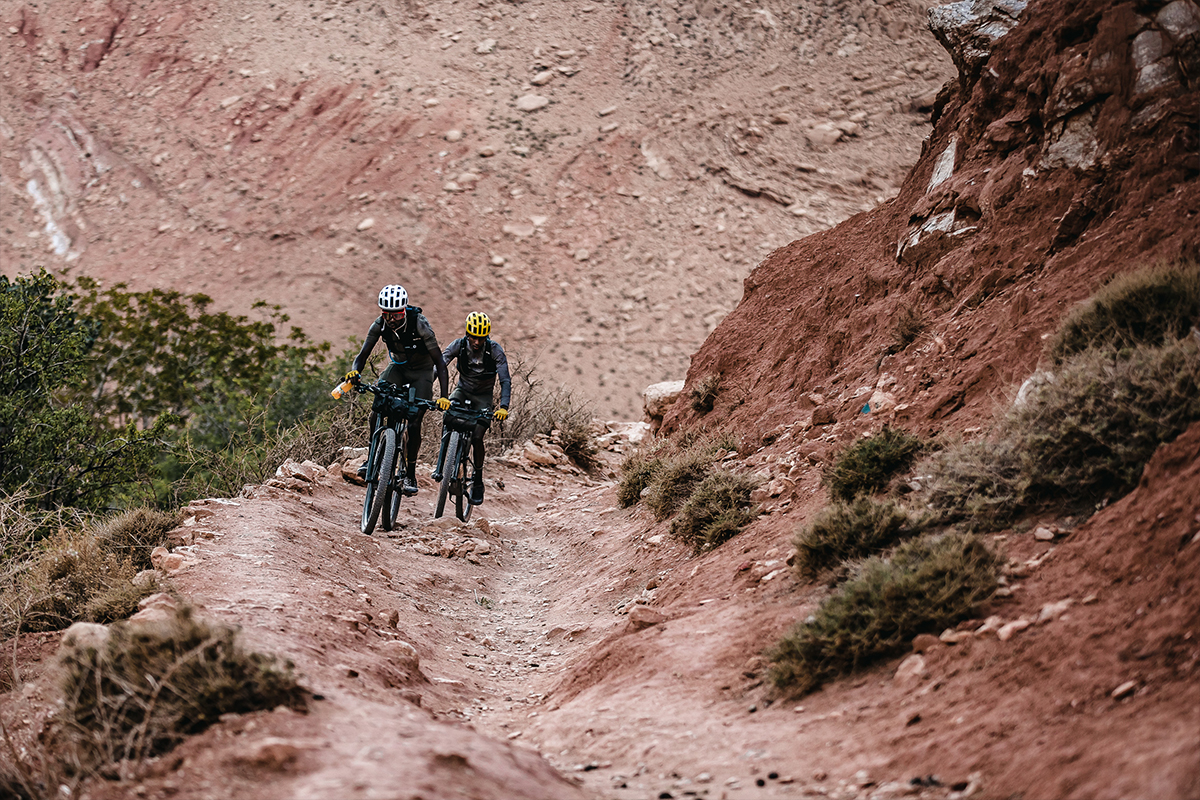
Only 14 kilometers south of Spain, but half a world away, Morocco has long held a special allure for visitors from around the globe. Perhaps it’s the typically sunny weather or the welcoming nature of its people—the bustling medinas or beautiful deserts, beaches, and mountains—but Morocco continues to attract travelers of all kinds, even those of the two-wheeled variety. Enter the Atlas Mountain Race.
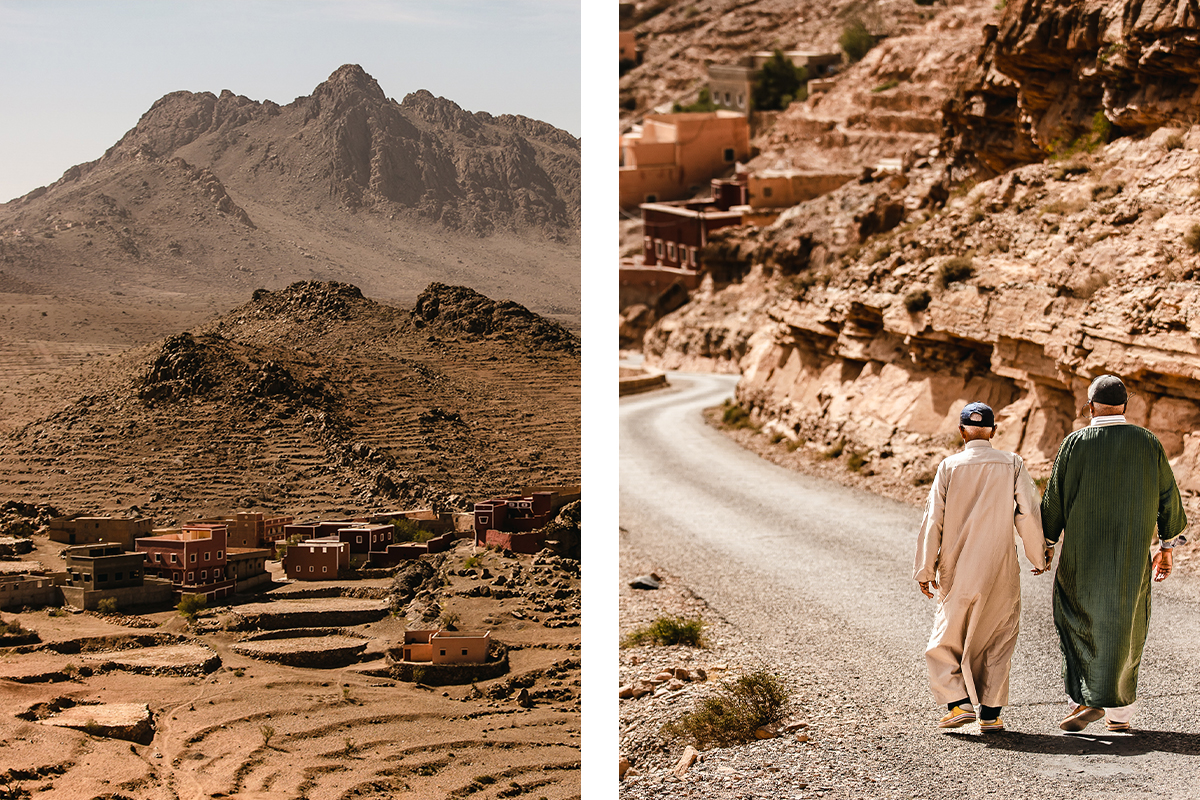
Kicking off its third edition February 3rd, the Atlas Mountain Race is a 1,300-kilometer ultra-endurance bikepacking competition across the winding roads, gravel tracks and trails of Morocco. Riders compete either solo or in pairs, passing through a series of checkpoints on a one-of-a-kind journey from the crowded bazaar of Marrakech to the port city of Essaouira. Unsupported and up against a clock that, once started, doesn’t stop till they’ve reached the finish, Atlas Mountain athletes are required to dig deep, facing numerous unexpected twists and turns along the way.
Or as race organizers describe it:
The first edition of the AMR took place in early 2020, before the rise of a pandemic that would delay any future editions for nearly three years. Founded by Nelson Trees (whose other event credits include Kyrgyzstan’s Silk Road Mountain Race), the Atlas Mountain Race draws inspiration from and shares a similar format to that of the Transcontinental Race, with one key difference. Unlike the TCR, Atlas Mountain racers must follow a fixed course, one which French athlete Sofiane Sehili managed to complete that first year in an unbelievable 3 days, 21 hours, and 50 minutes.
In that race, as well as in the AMR’s second edition late last autumn, the course carried riders from Marrakech to Agadir, crossing some 1,167 kilometers of mountainous terrain from which the event draws its name. For its third edition, riders will have to push even further, tacking on an extra 135 kilometers to reach the finish inside the city walls of Essaouira.
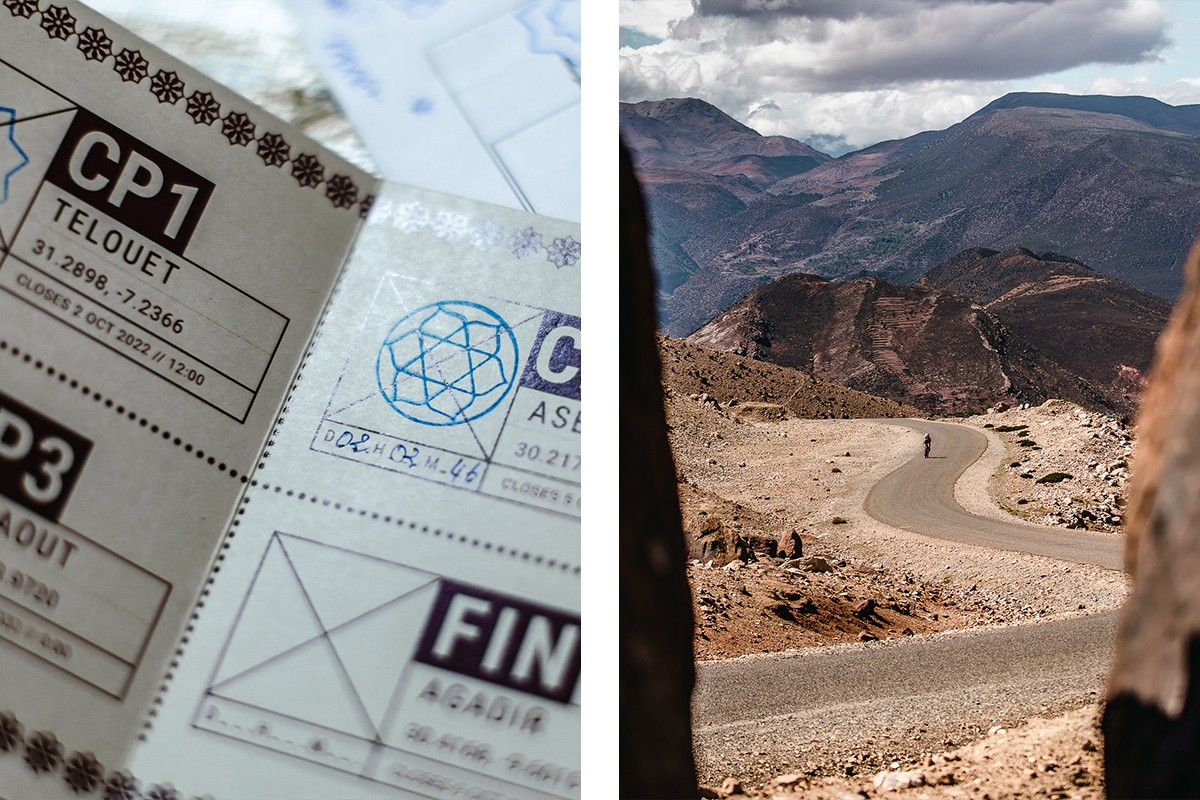
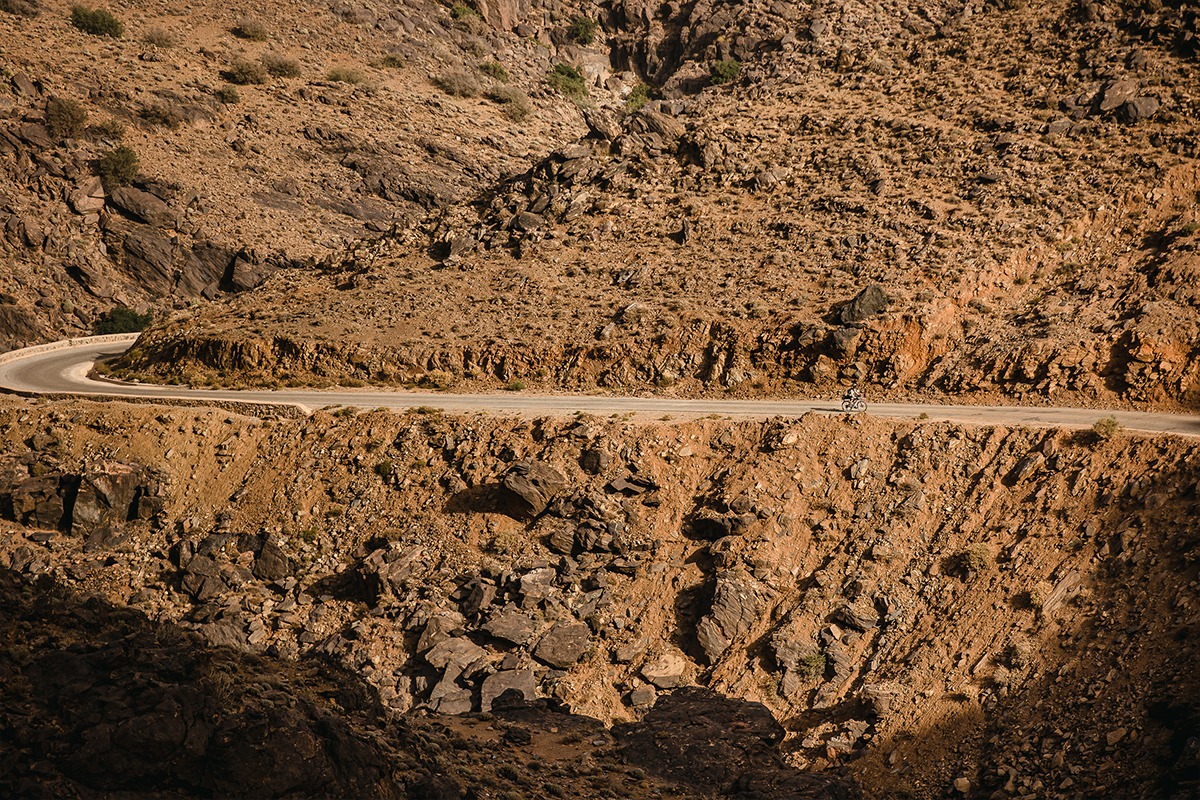
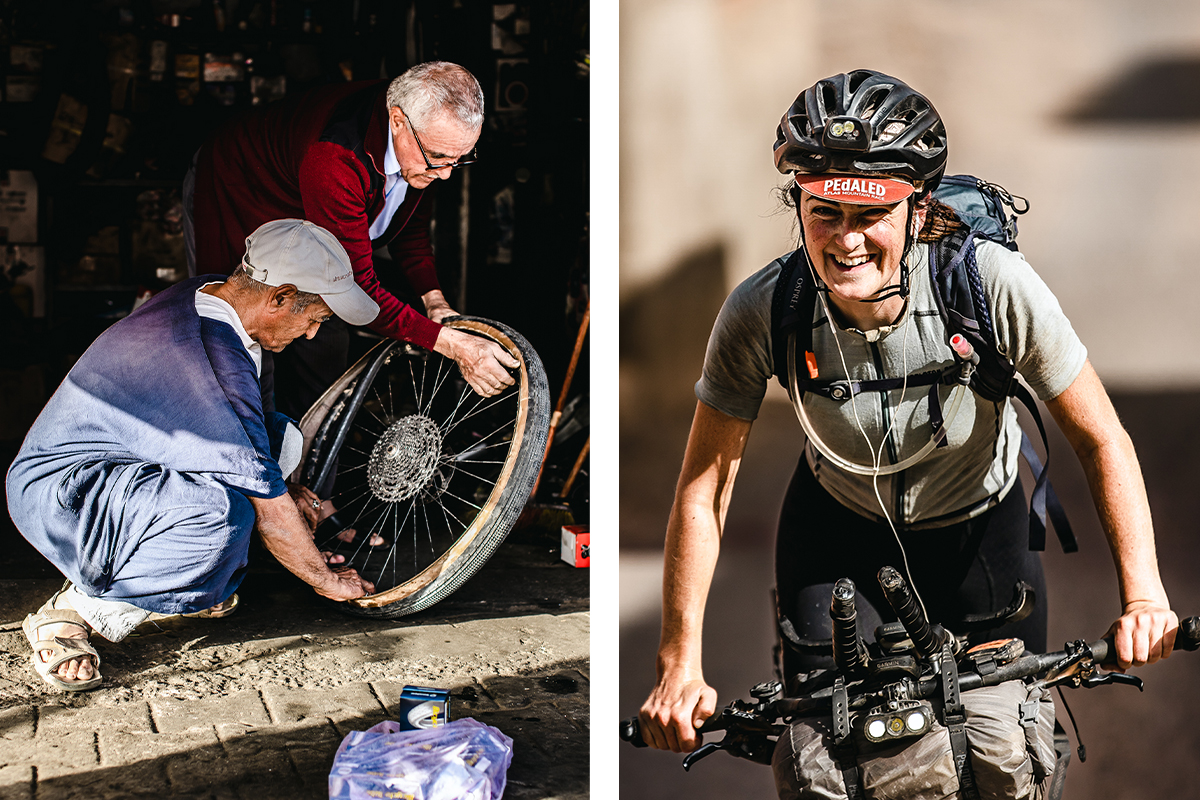
Of course, extreme distances are only one part of the overall challenge of the Atlas Mountain Race. Other difficulties include rough terrain, steep climbs, long distances between resupply, and unpredictable weather conditions—a reality that helped shape the race last fall when heavy rains swelled rivers and forced those at the front to wait for waters to recede, giving the rest of the field time to catch up.
Another notable performance from last year’s AMR includes pairs winners Kenneth Karaya Mungai and Geoffrey Langat from Team Amani, who pushed one another and pedaled together for a finishing time of 4 days and 11 hours.
A revised course this year means that Marin’s record will stand, and it also means a new set of surprises for riders to overcome. While individuals and teams gather in Marrakech, finalizing packing lists and making last-minute bike adjustments, we wish athletes and organizers alike good luck as we all look forward to watching another Moroccan adventure unfold.
You can follow along for regular updates throughout the race on Instagram @atlasmountainrace or on the event’s website www.atlasmountainrace.com
Photo – Ariel Wojciechowski
Former courier and current adventure-racing pro Nico Deportago-Cabrera is no stranger to cold-weather cycling, having spent many years exposed to the Windy City’s big chill. Read on to enjoy Indigo Nico’s thoughts on navigating the annual inevitability of riding through winter.
What’s your relationship with winter?
Winter for me is a reminder that all things have a cycle. If a year was a day, it would be Midnight.
My relationship with cycling, and I suppose with Winter, really began when I started working as a bike messenger in Chicago. Living here, we all deal with it. But as a messenger you cannot escape it.
It can either be your enemy or you can make it your ally, but it takes some time to figure out how.

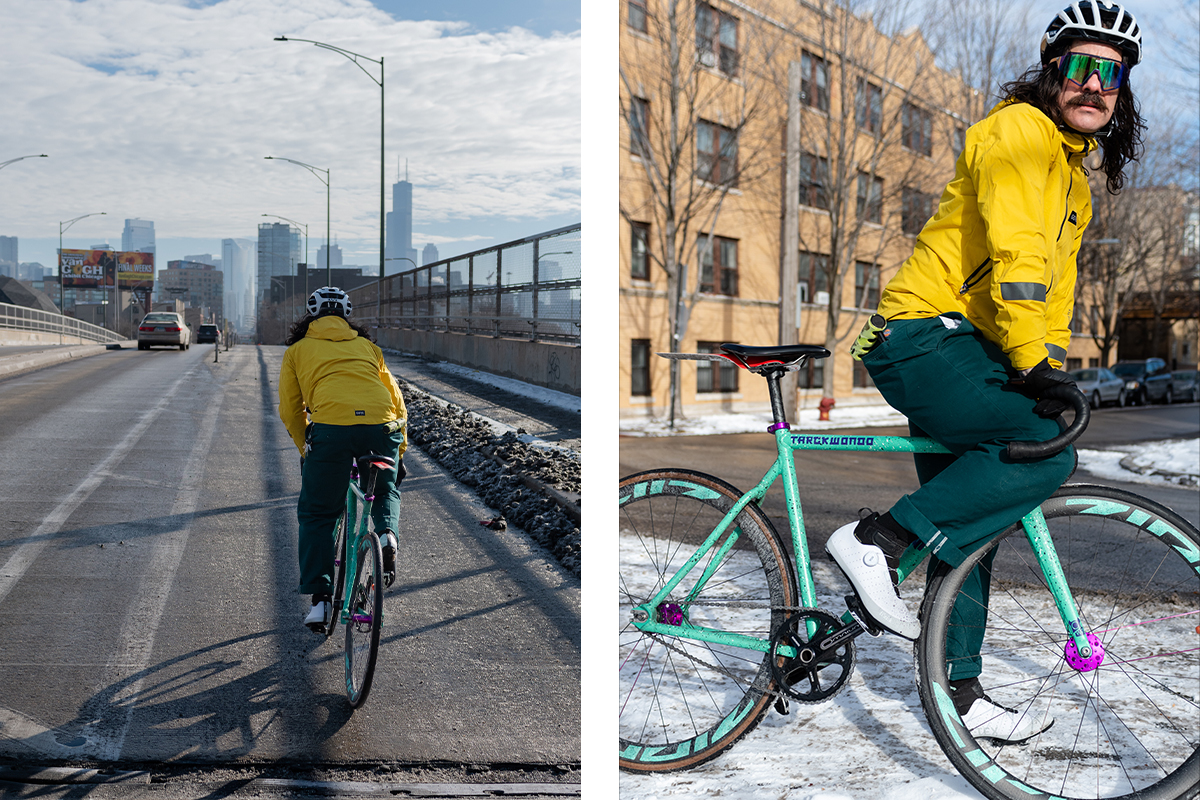
How do you prepare for a winter ride?
There are a few different definitions of winter here… sometimes it can be sunny and 30°F below or sometimes it can be 35°F and raining. Regardless of conditions, having gear that will keep you warm and dry is the difference between love and hate. Usually for me, it starts with my feet and hands. No matter what is going on elsewhere, if you can’t keep your feet and hands warm and dry, it isn’t going to go well. The Fizik Tempo Artica GTX shoes don’t seem to mind the cold, the wet, or the cold and wet, so they are the first piece of kit I go for. My track bike might be the second. As sketchy as it may sound, the added control of a fixed gear keeps me confident when the roads are icy or torn up from winter’s toll. Also track bikes, they’re the best.
How was being a bike messenger during Chicago’s winter?
I remember my first winter as a messenger had a 10-day stretch where the high was 7 below zero. In an industry where people came and went so often, getting through the winter months was like a rite of passage. I was another faceless rookie going into December, and by the end of March, I was part of the family. We often measured our time on the road by how many winters we had worked, and by the time I retired my radio it had been 13 of them.
Words by Nico Deportago-Cabrera
Photo – Dennis Peralta
Few people would name winter as their favorite riding season. Even the pros can struggle to get out when the forecast turns snowy and temperatures start to dip. But the right route and preparation can make chilly rides more pleasant—just ask Lachlan Morton, who recently shared his thoughts on navigating the “necessary evil” of cold-weather training.

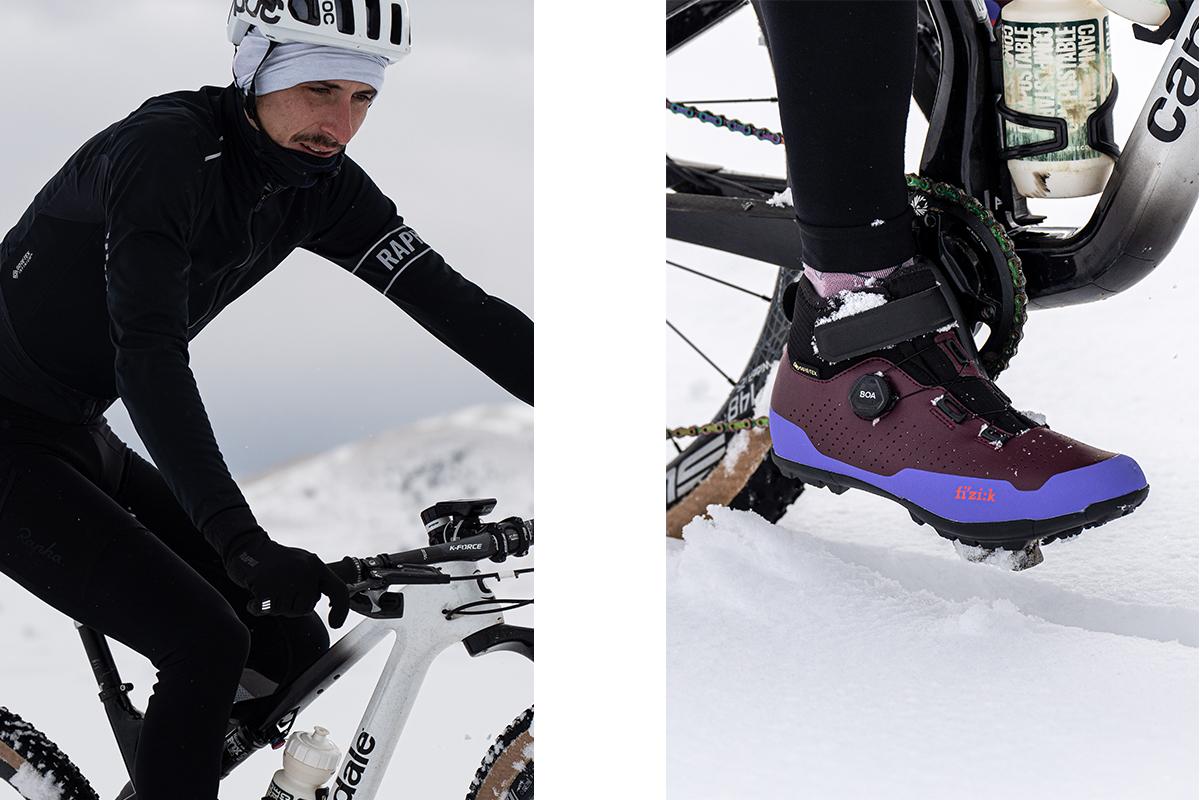
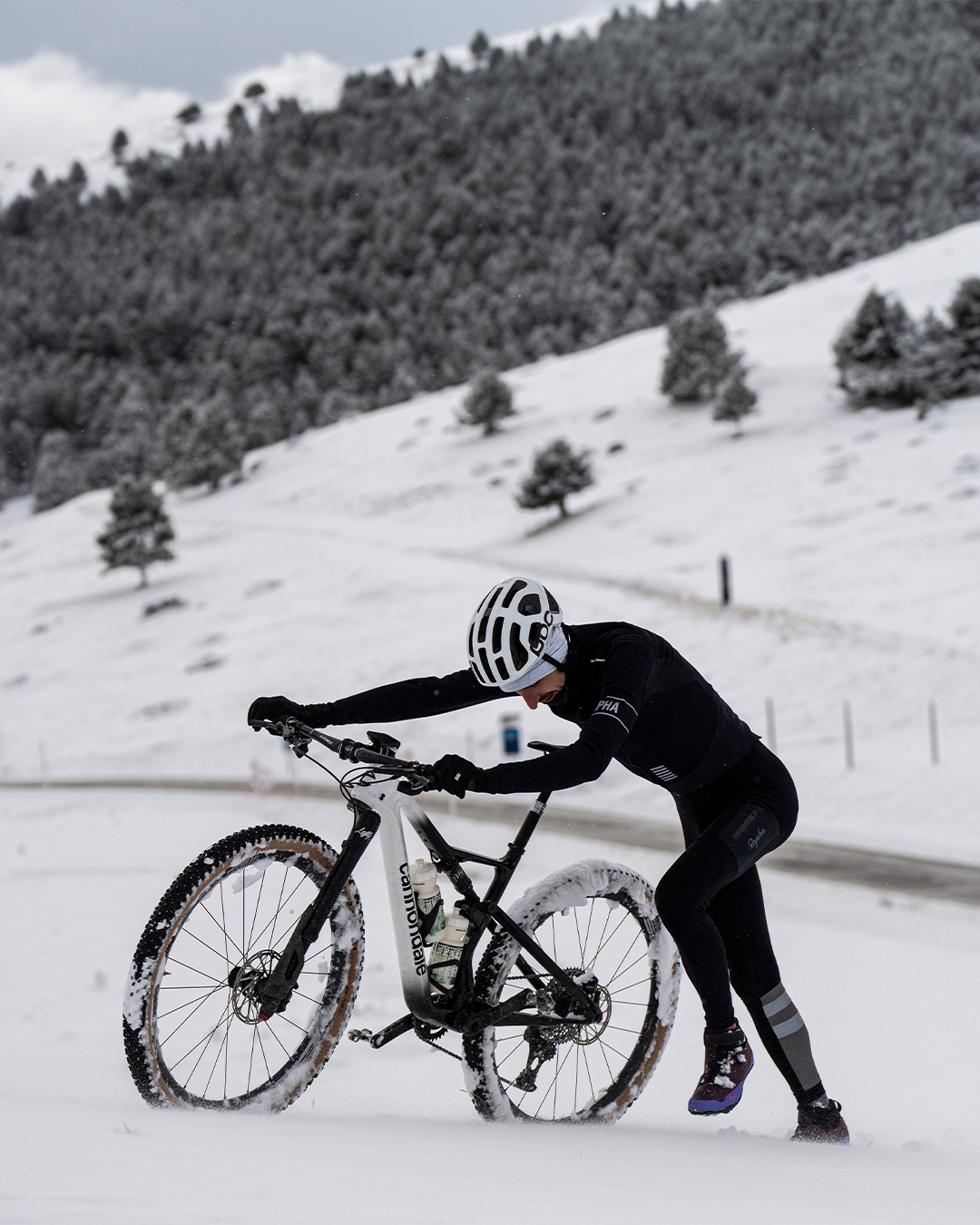
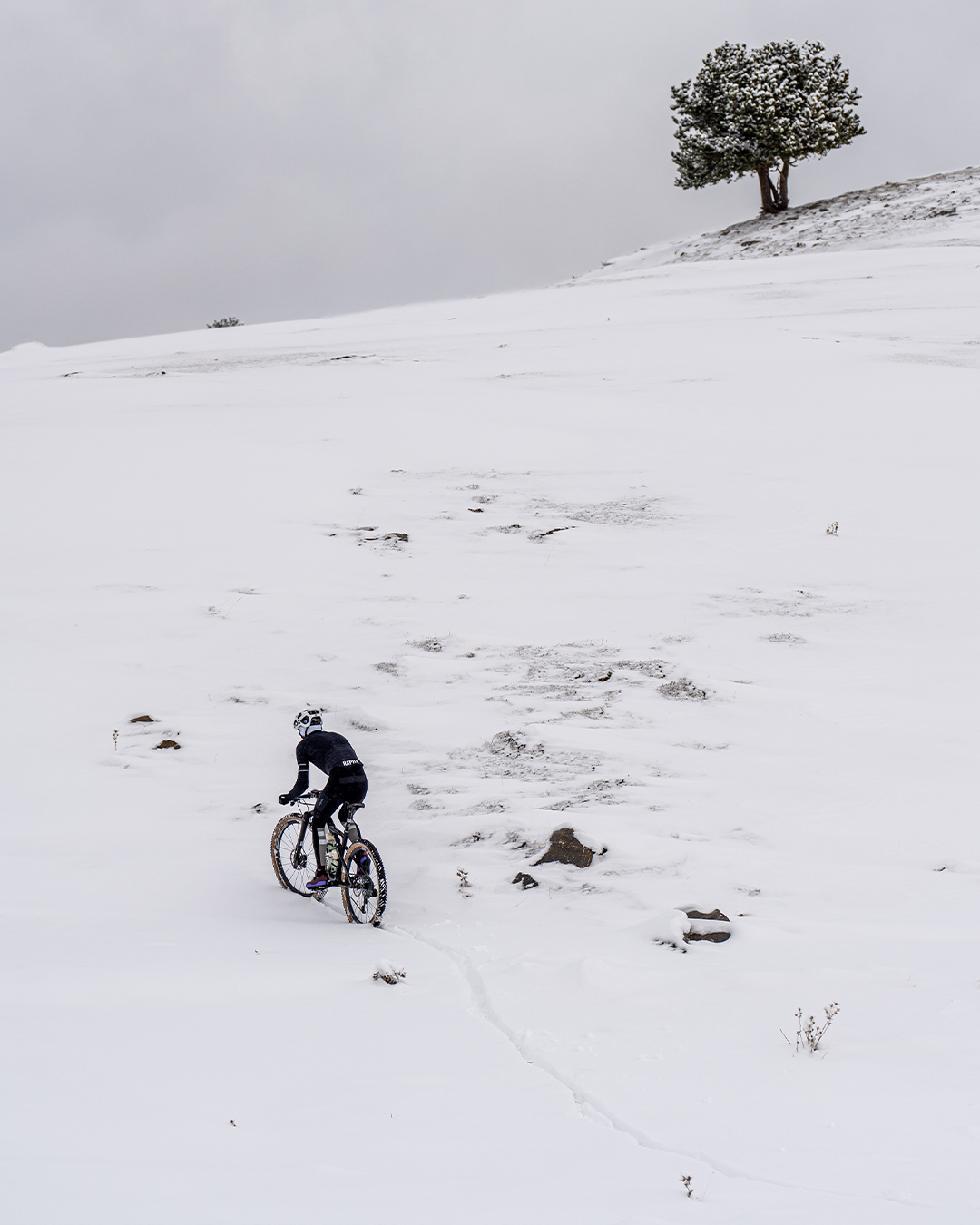
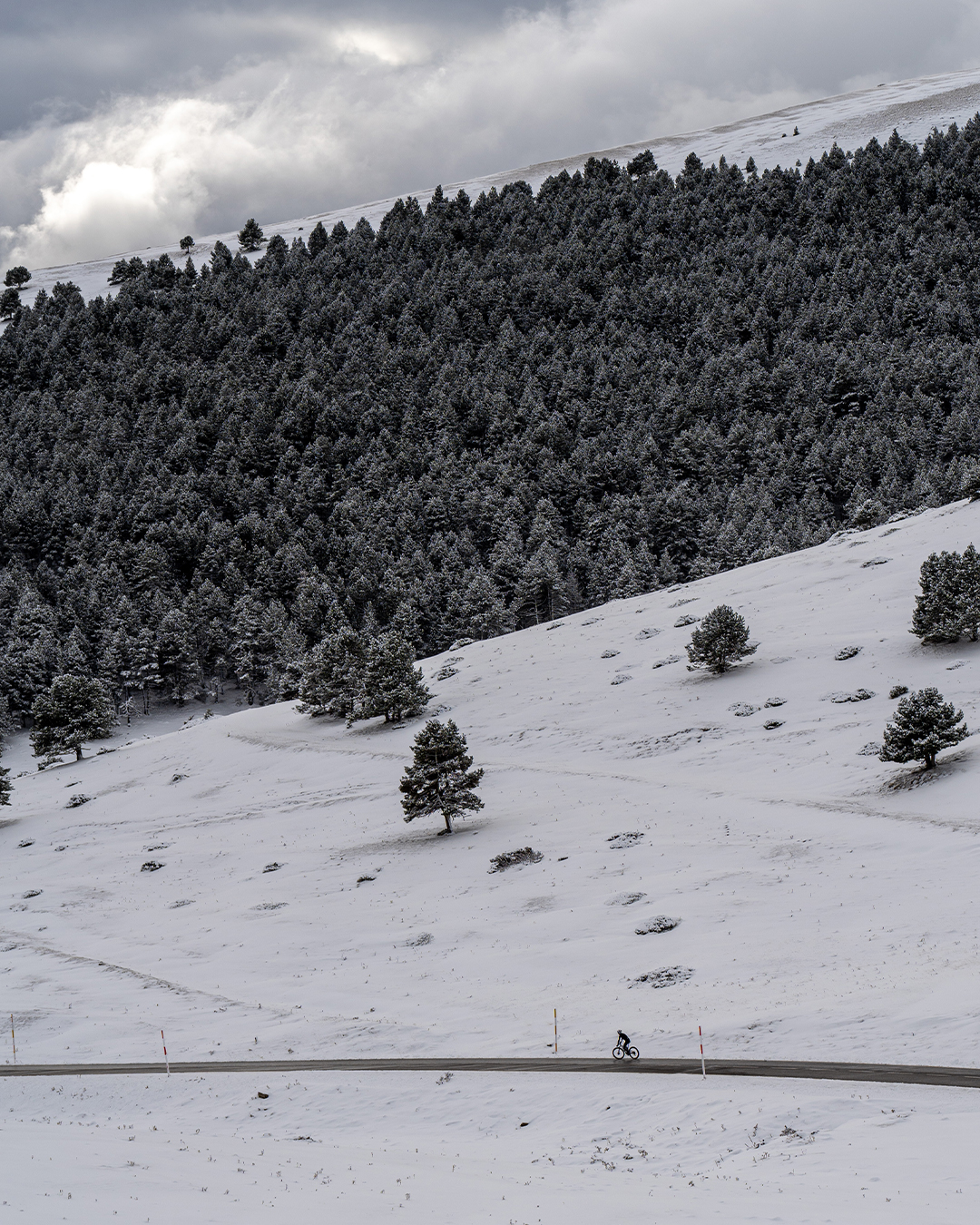
Photos by Airan Photo

